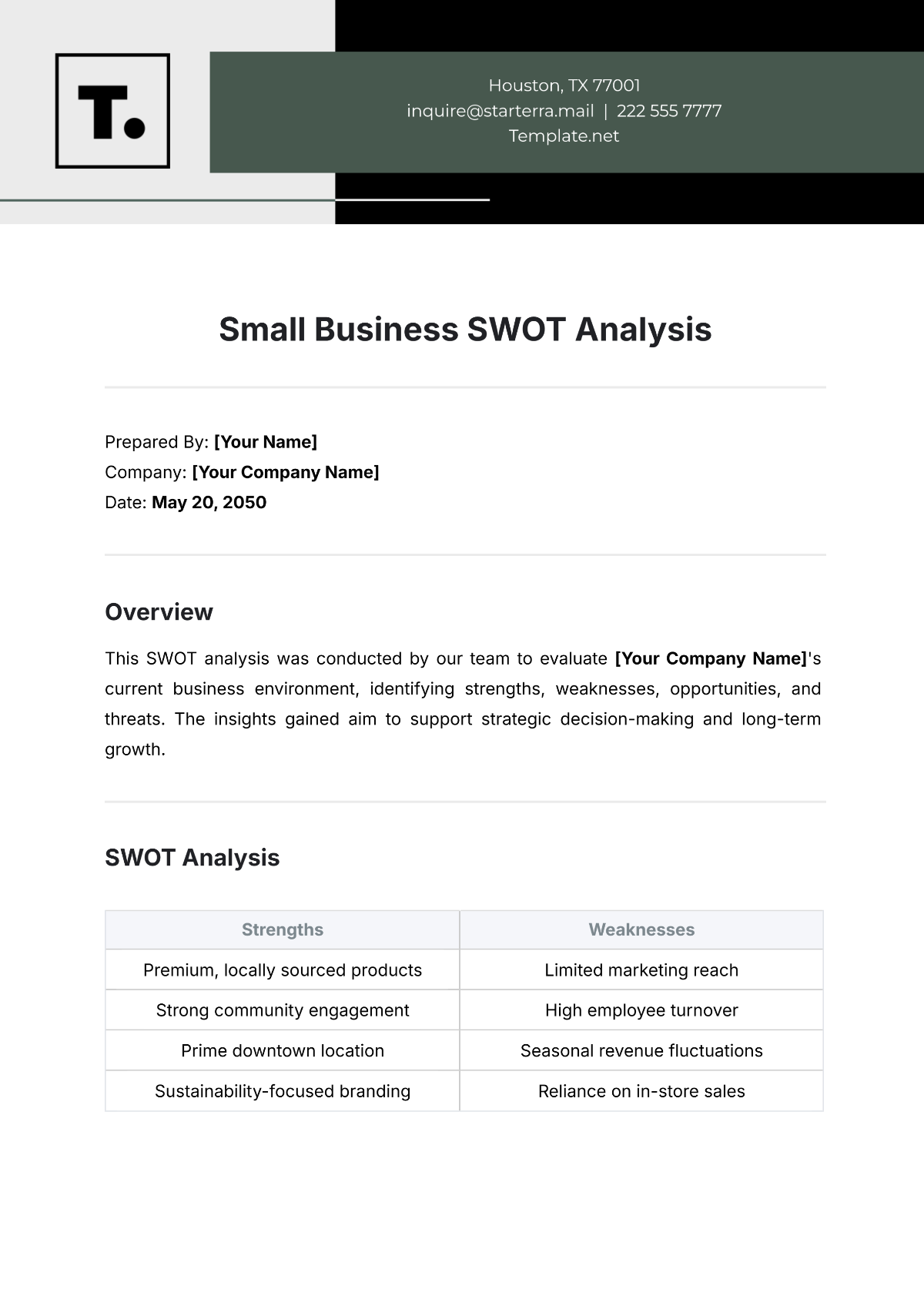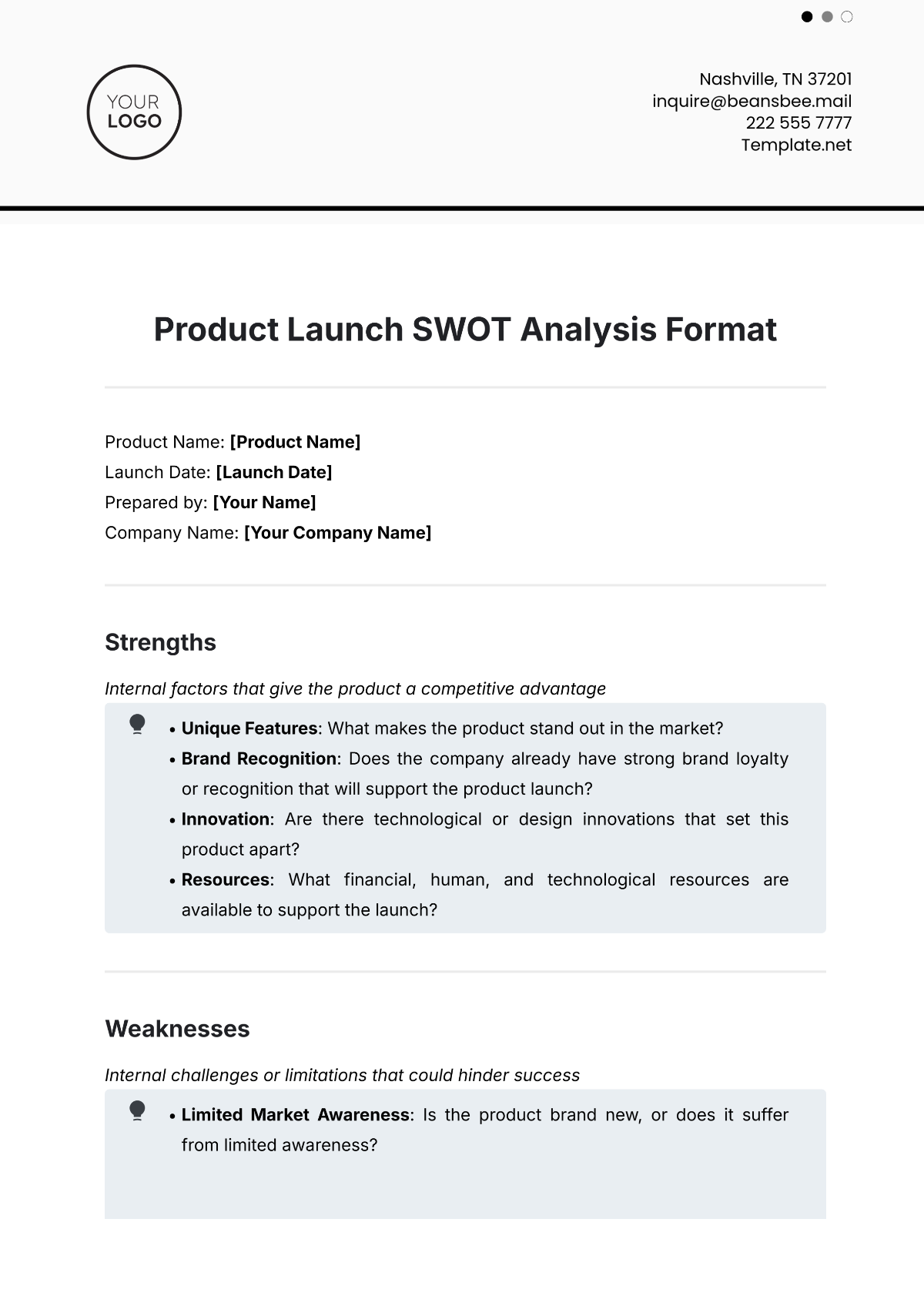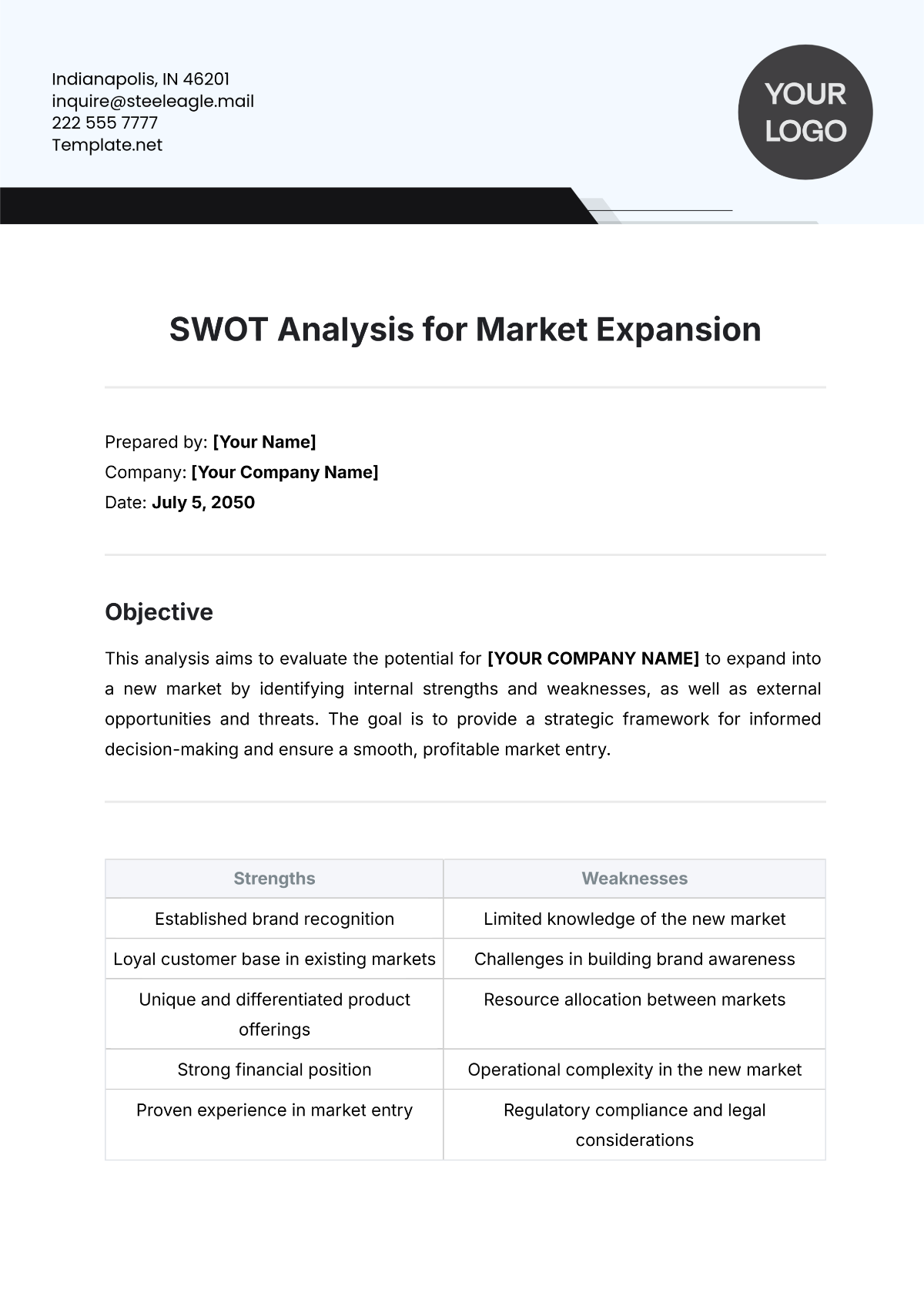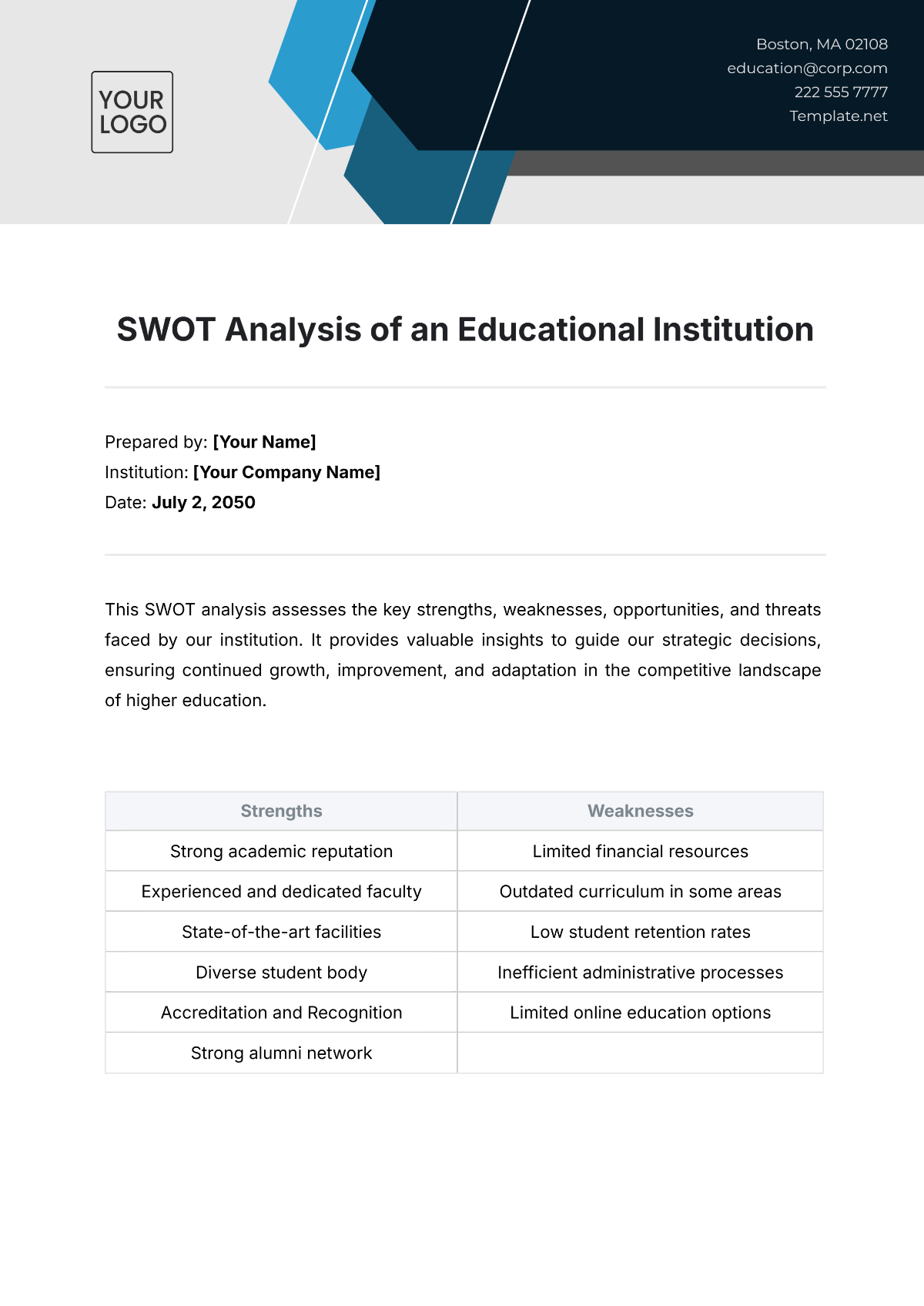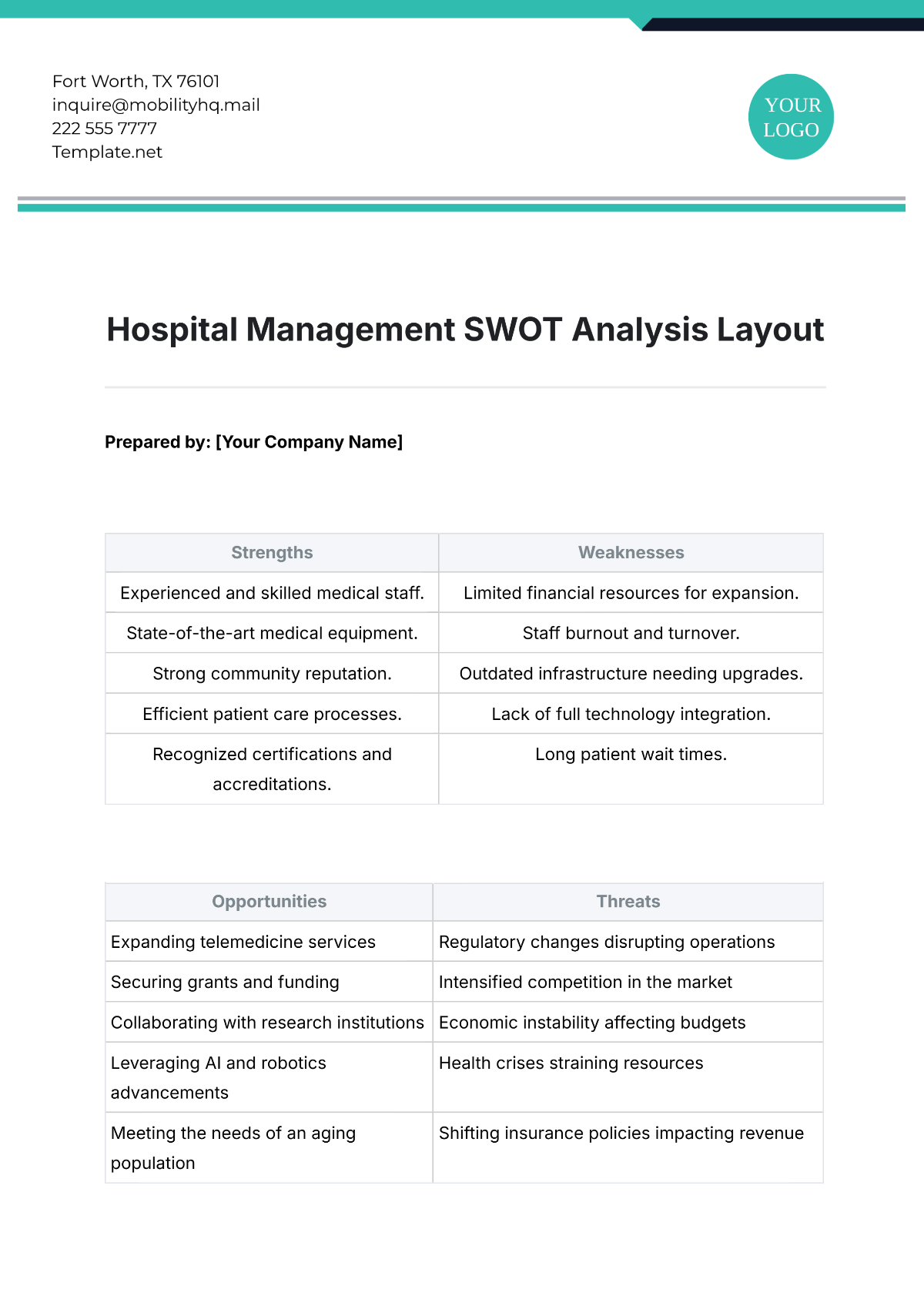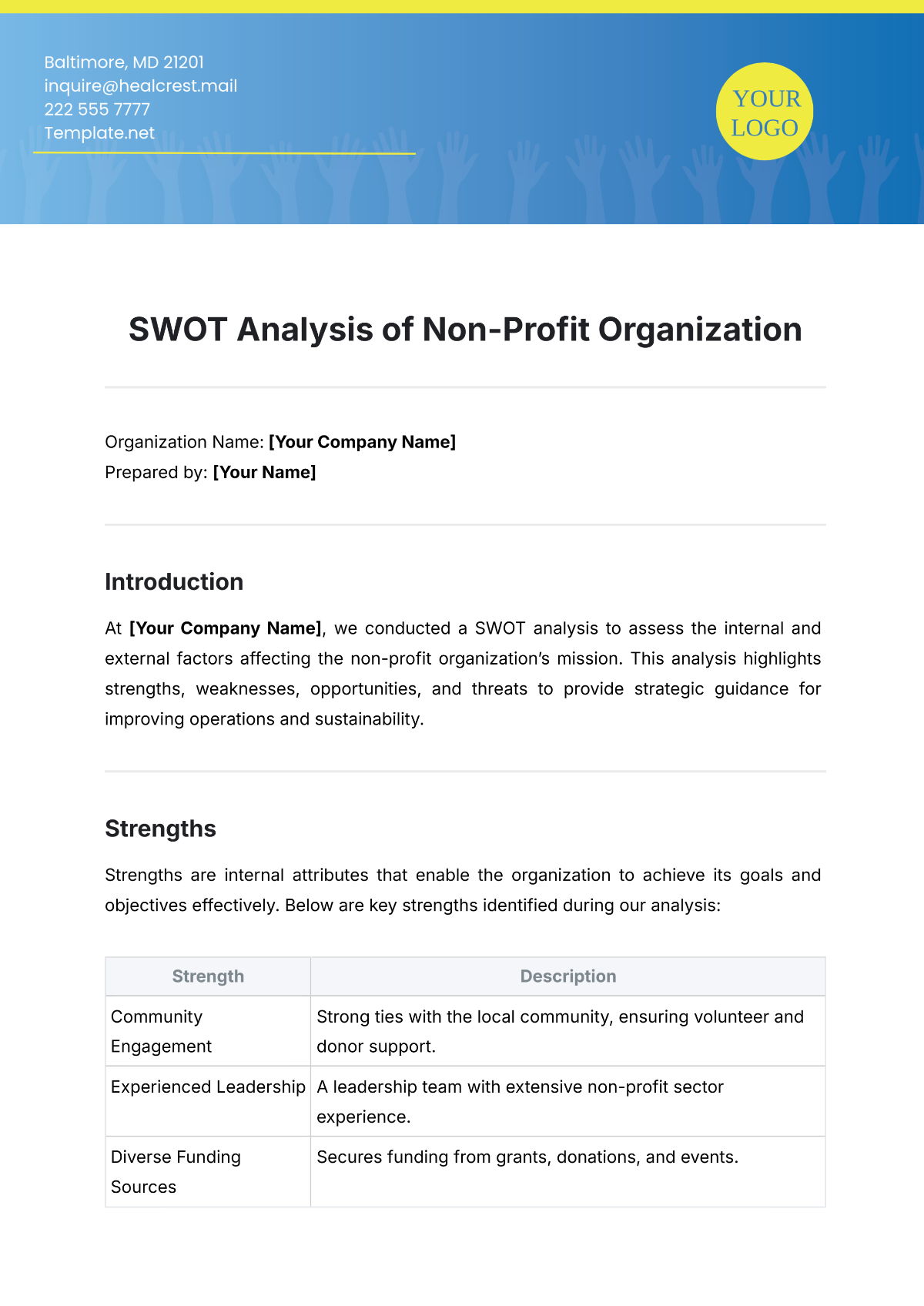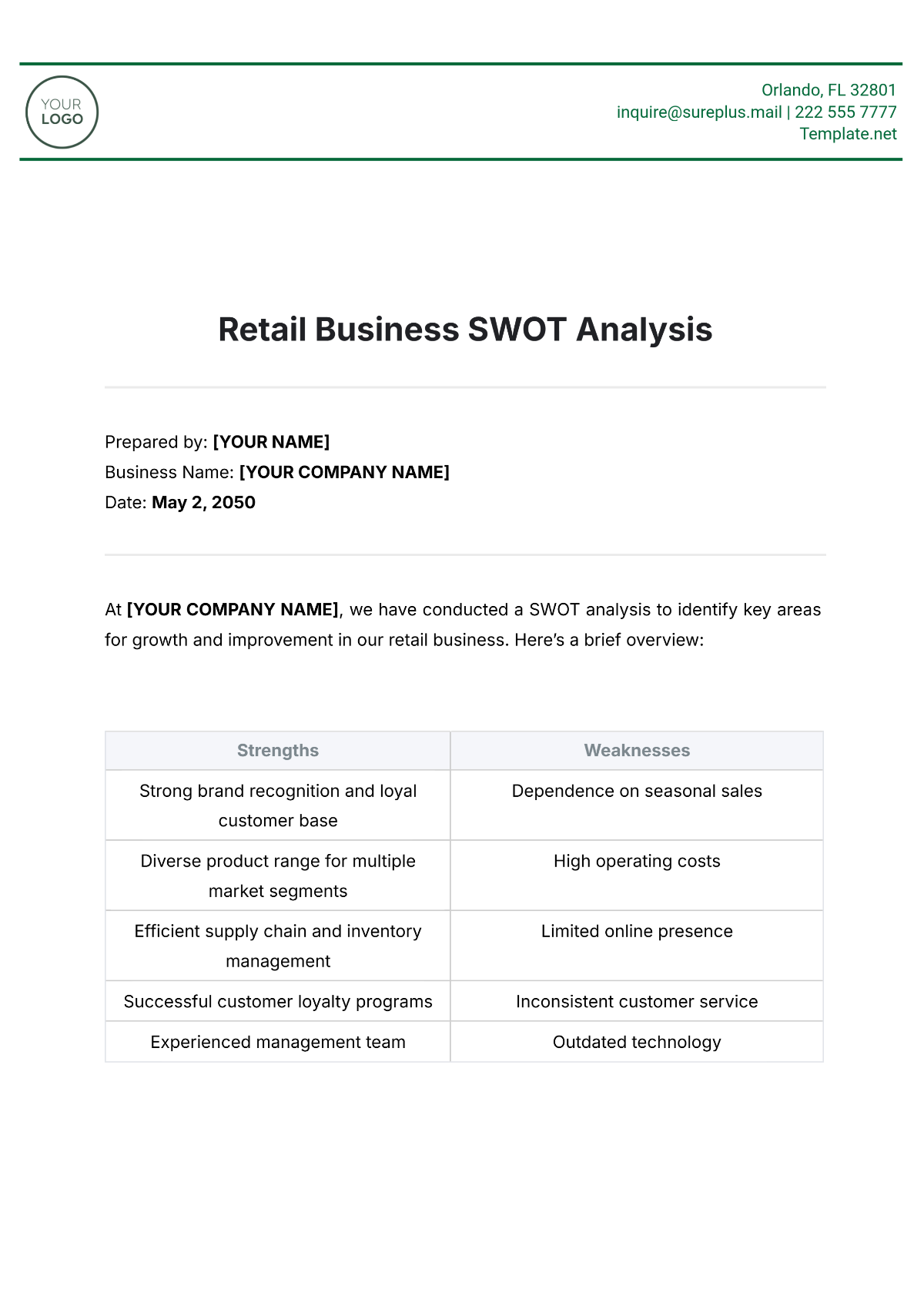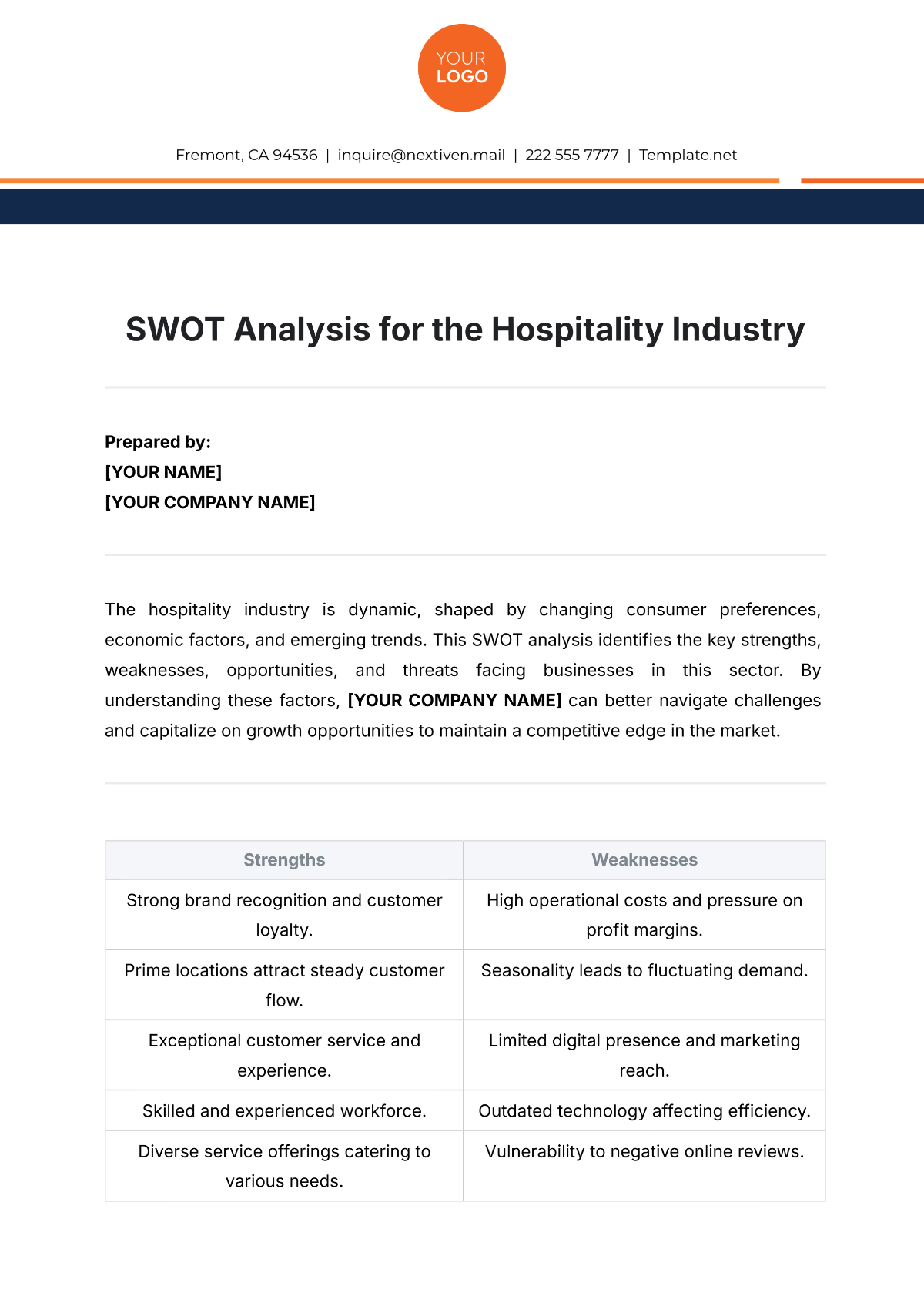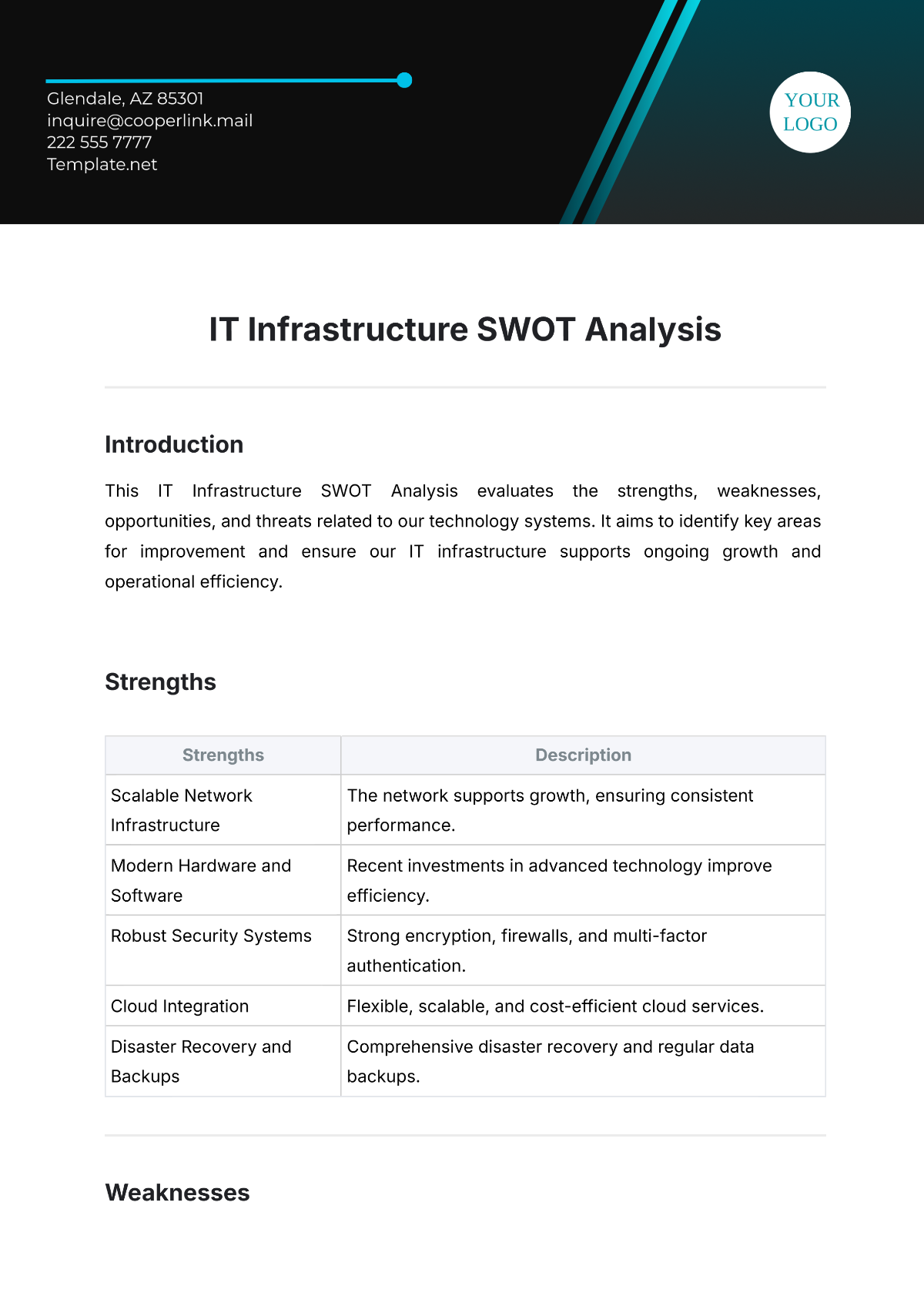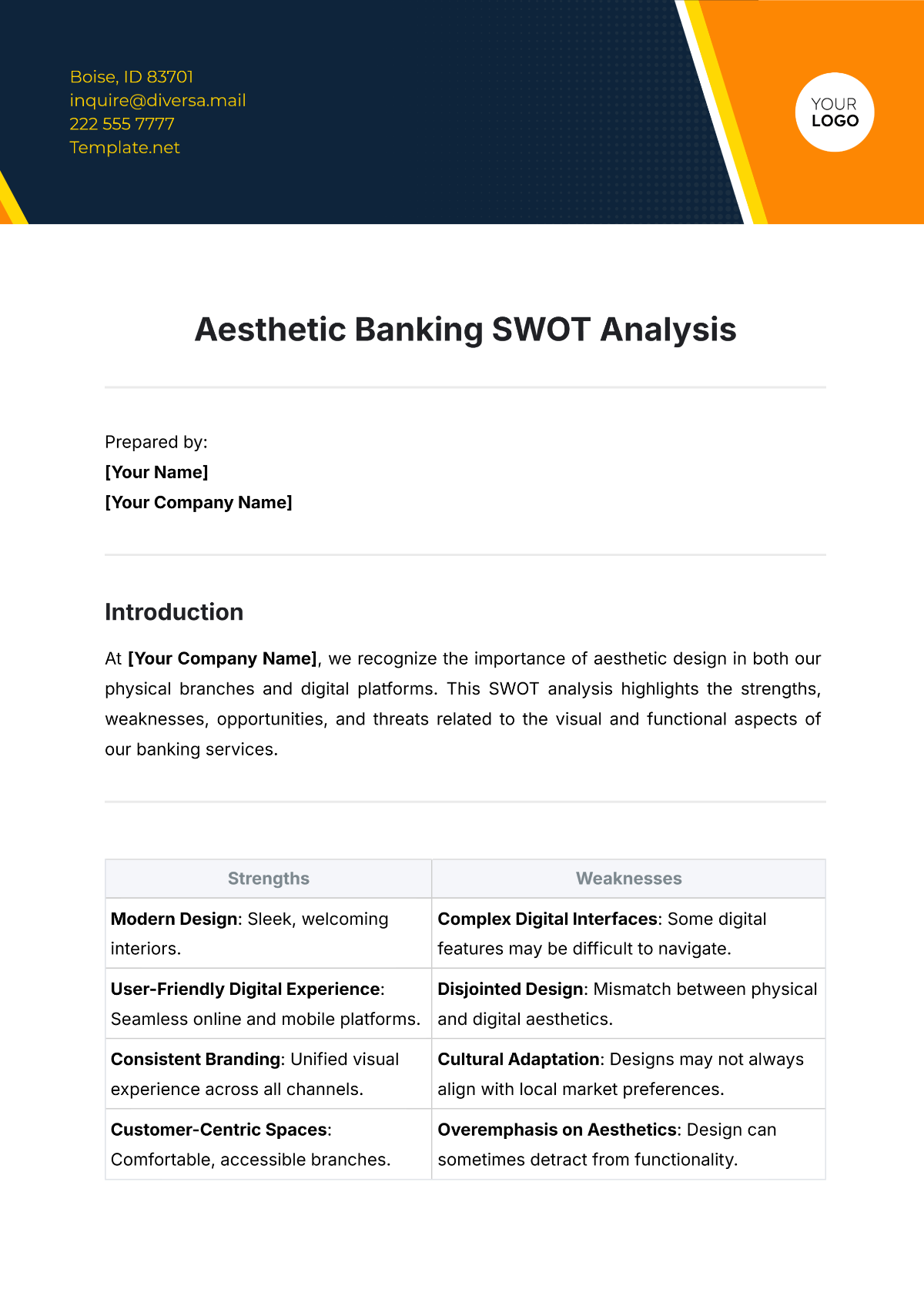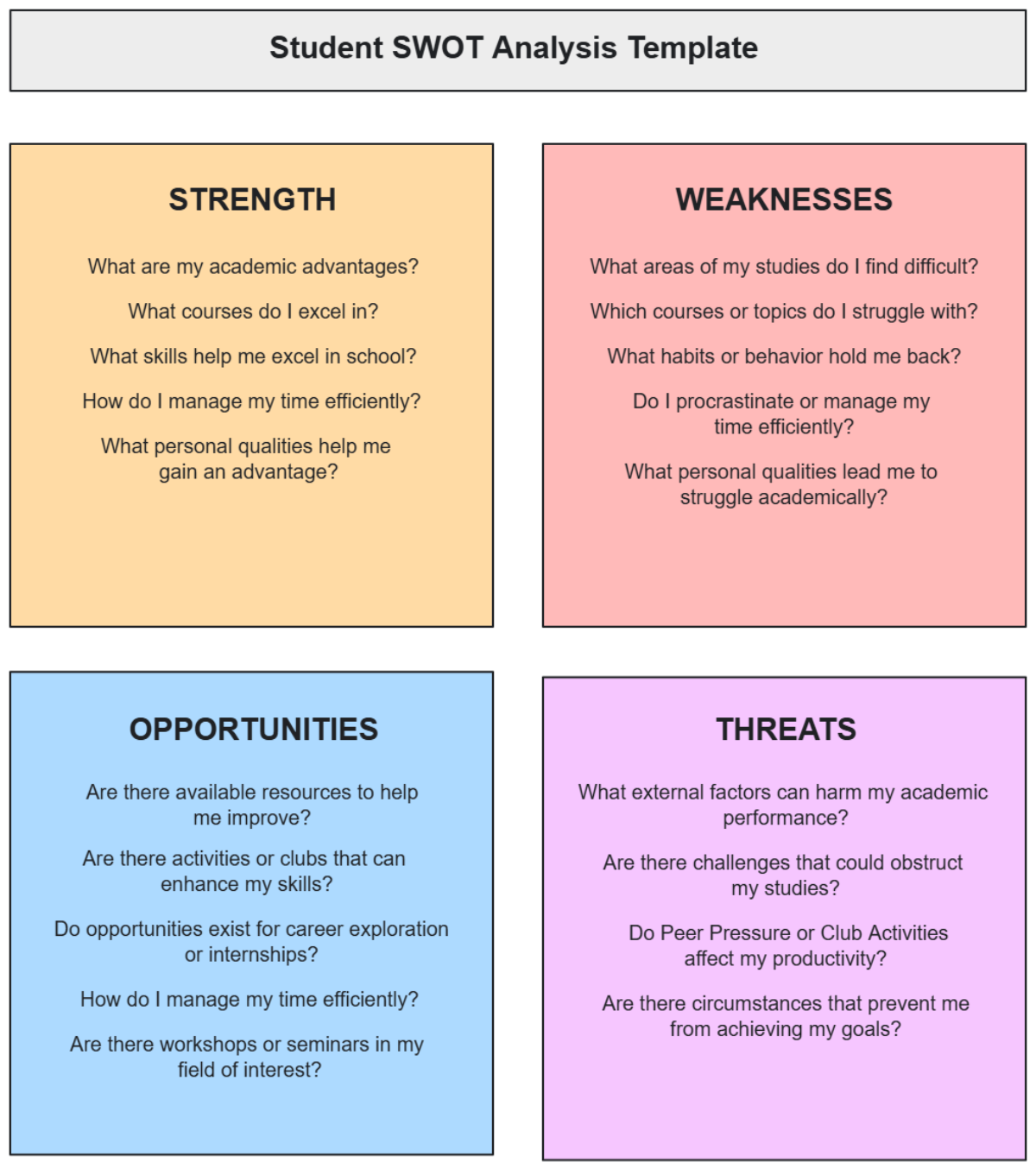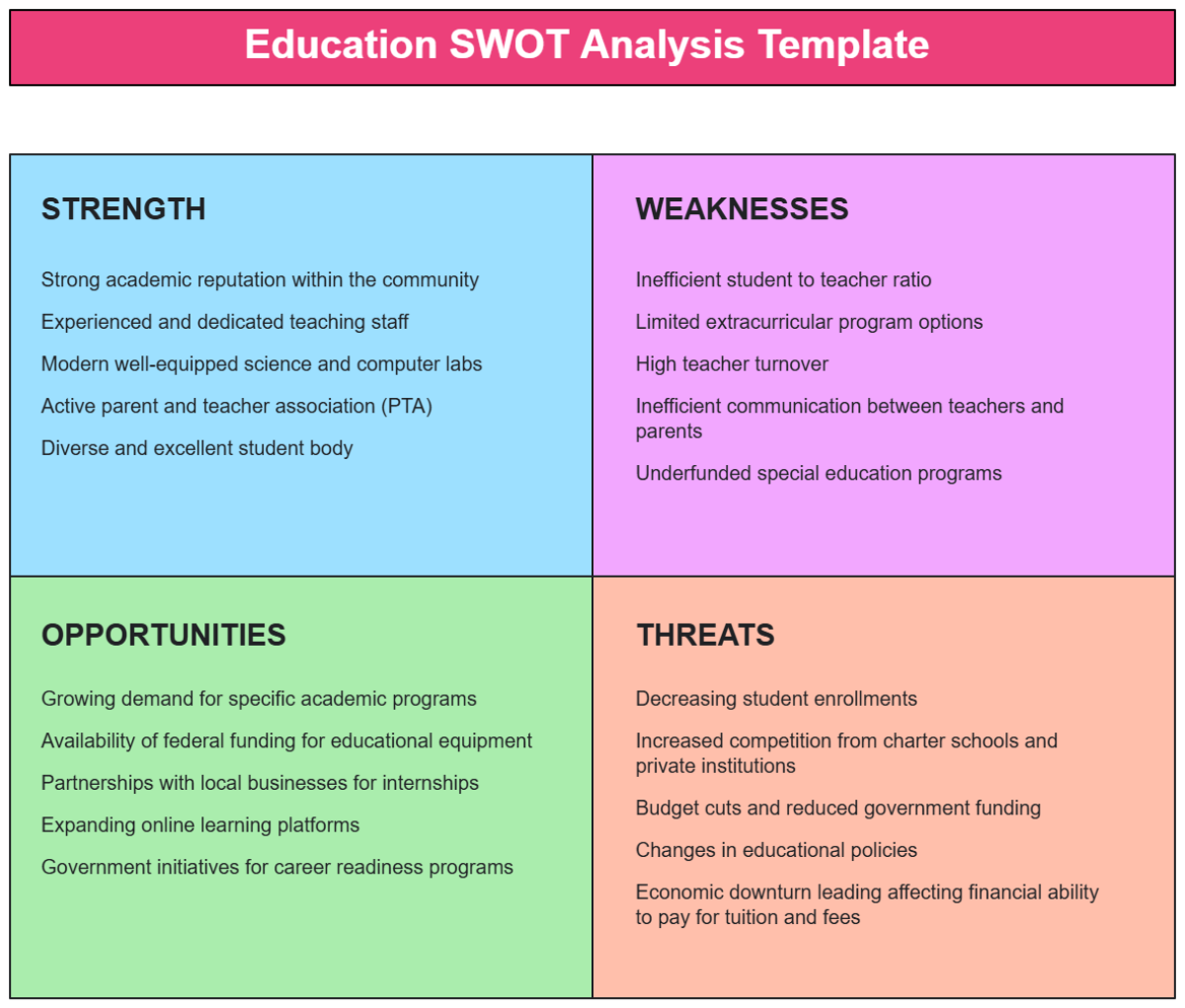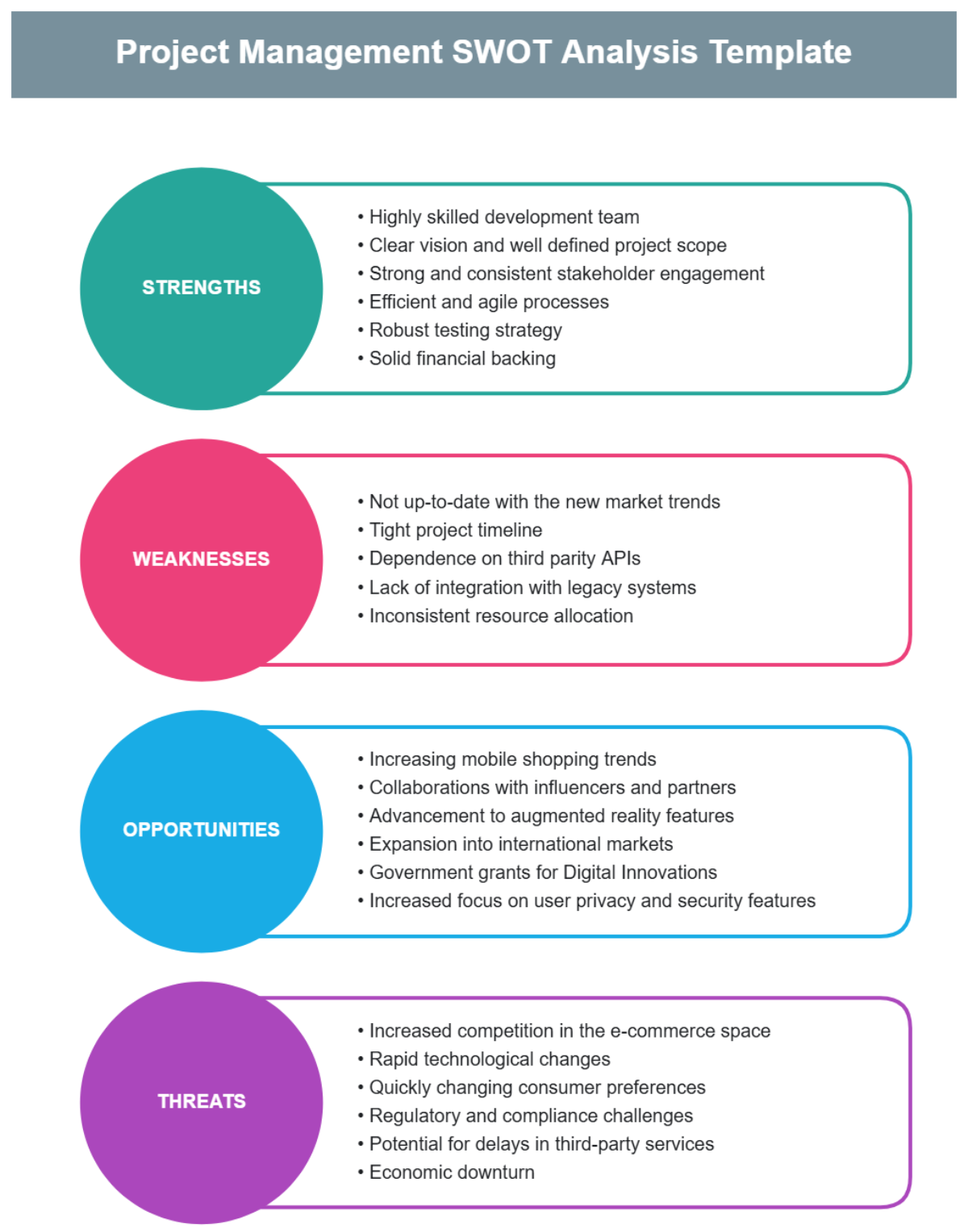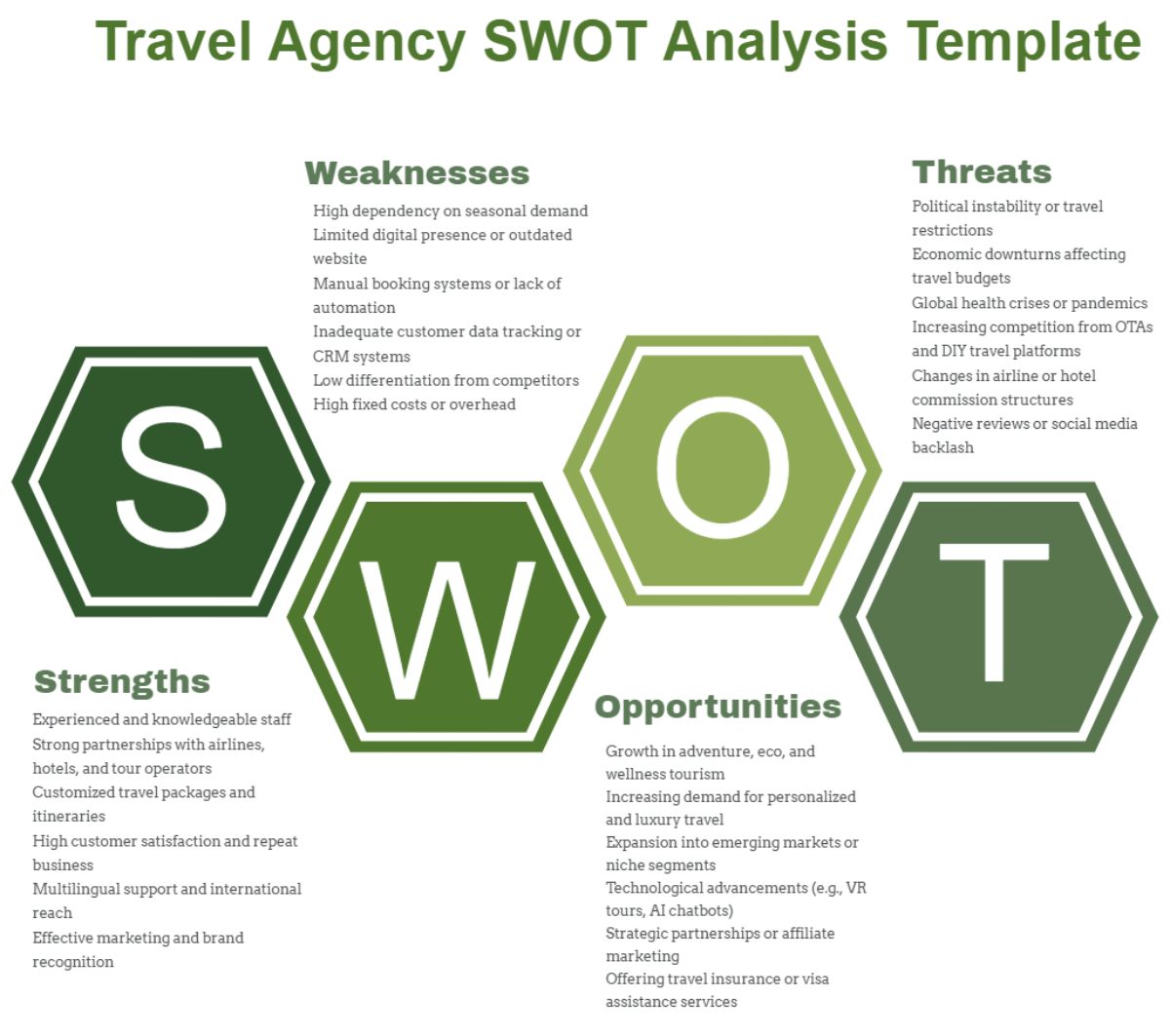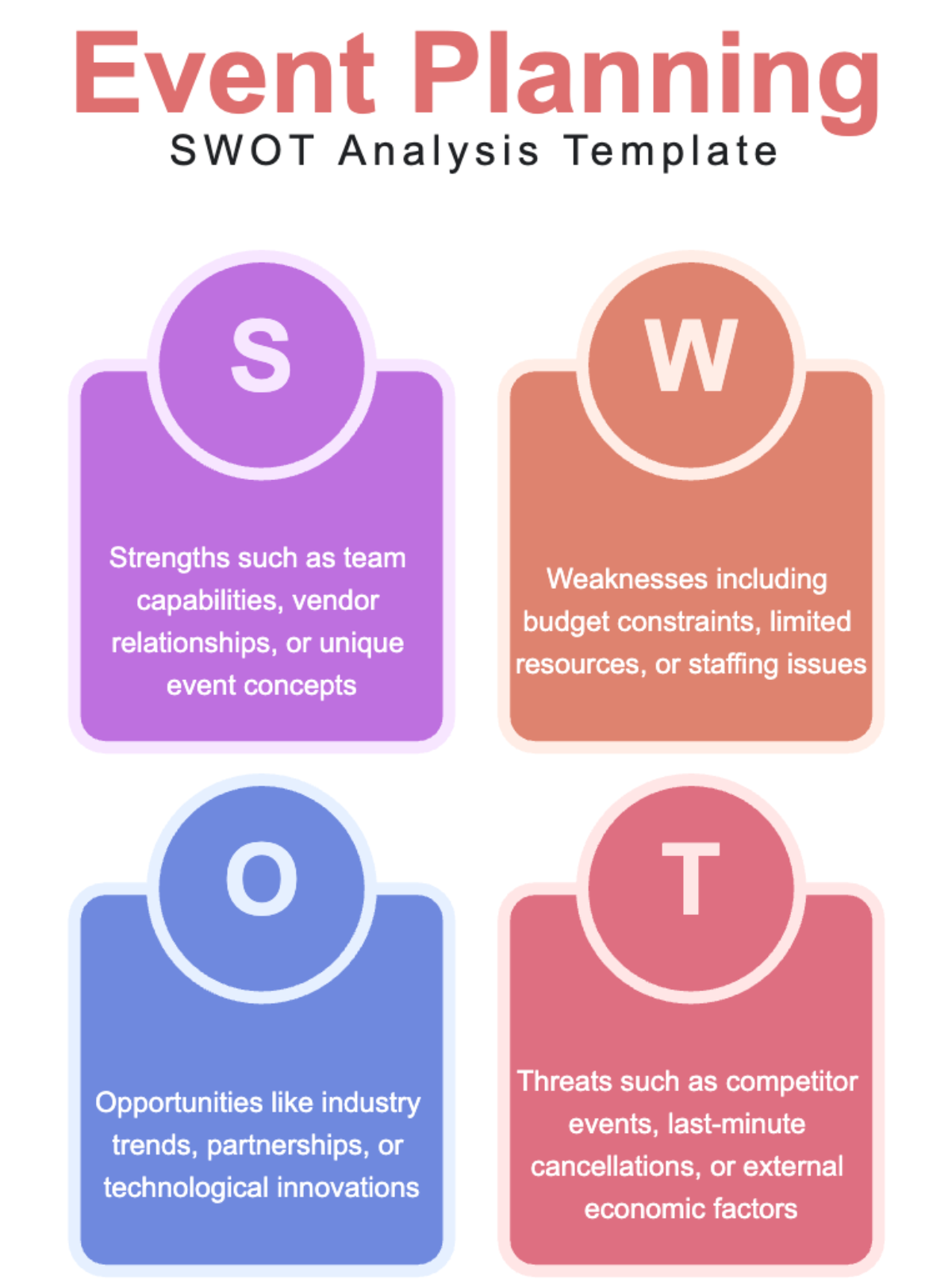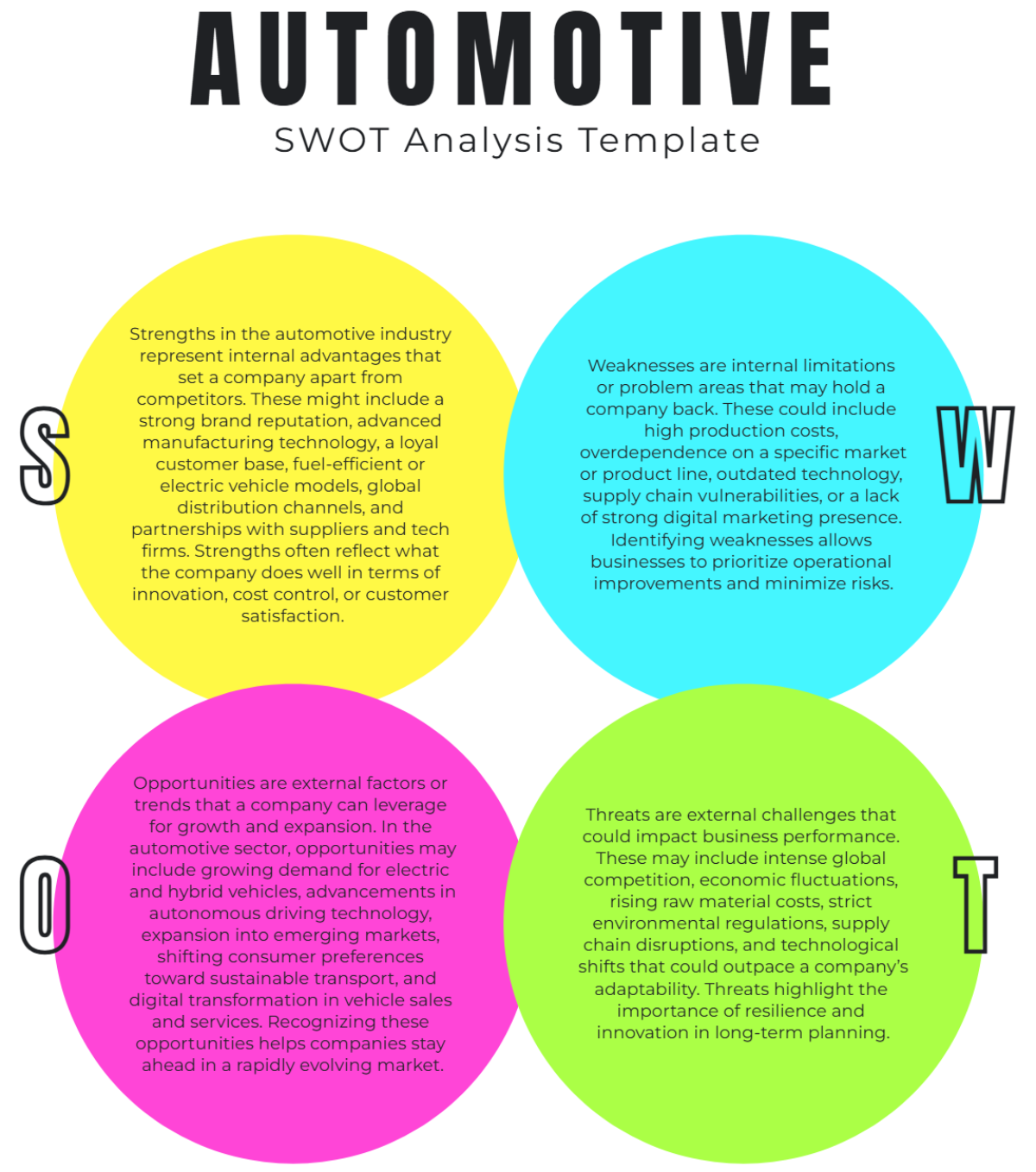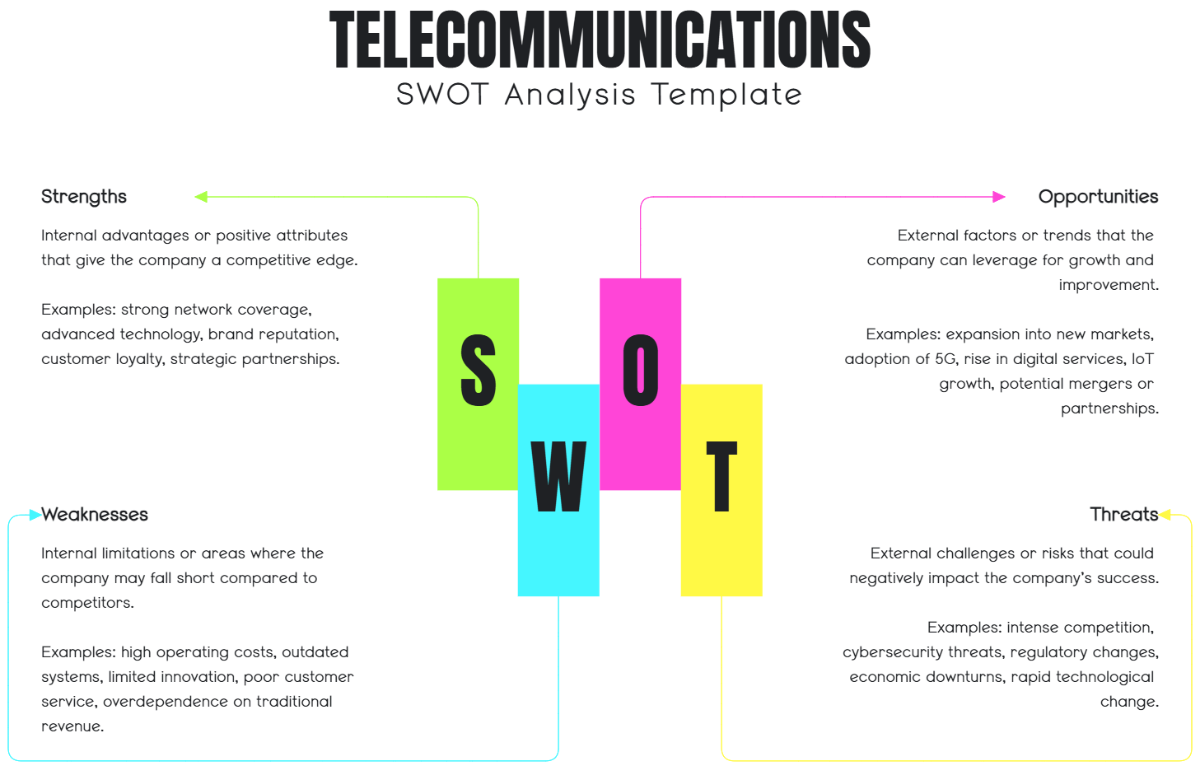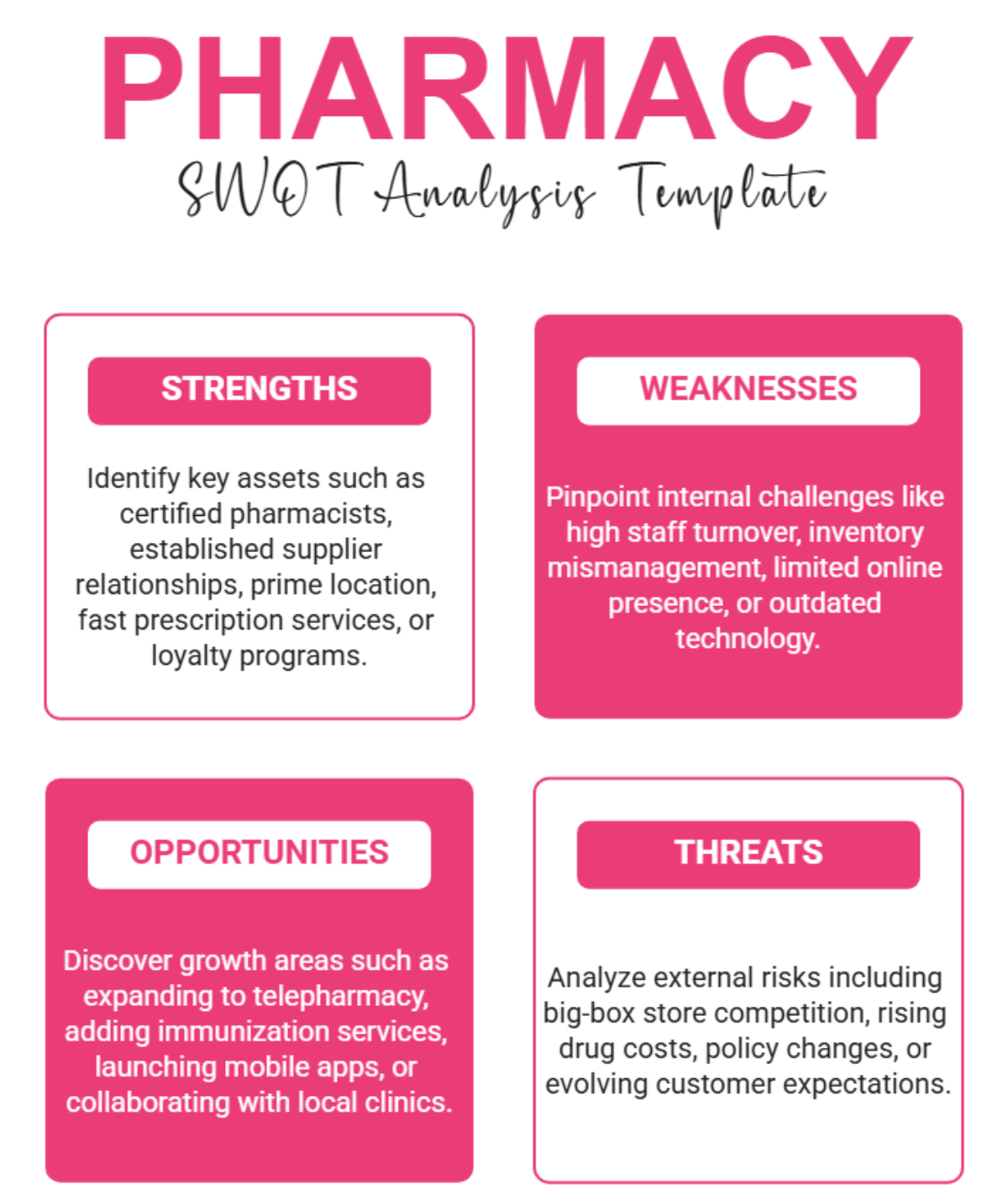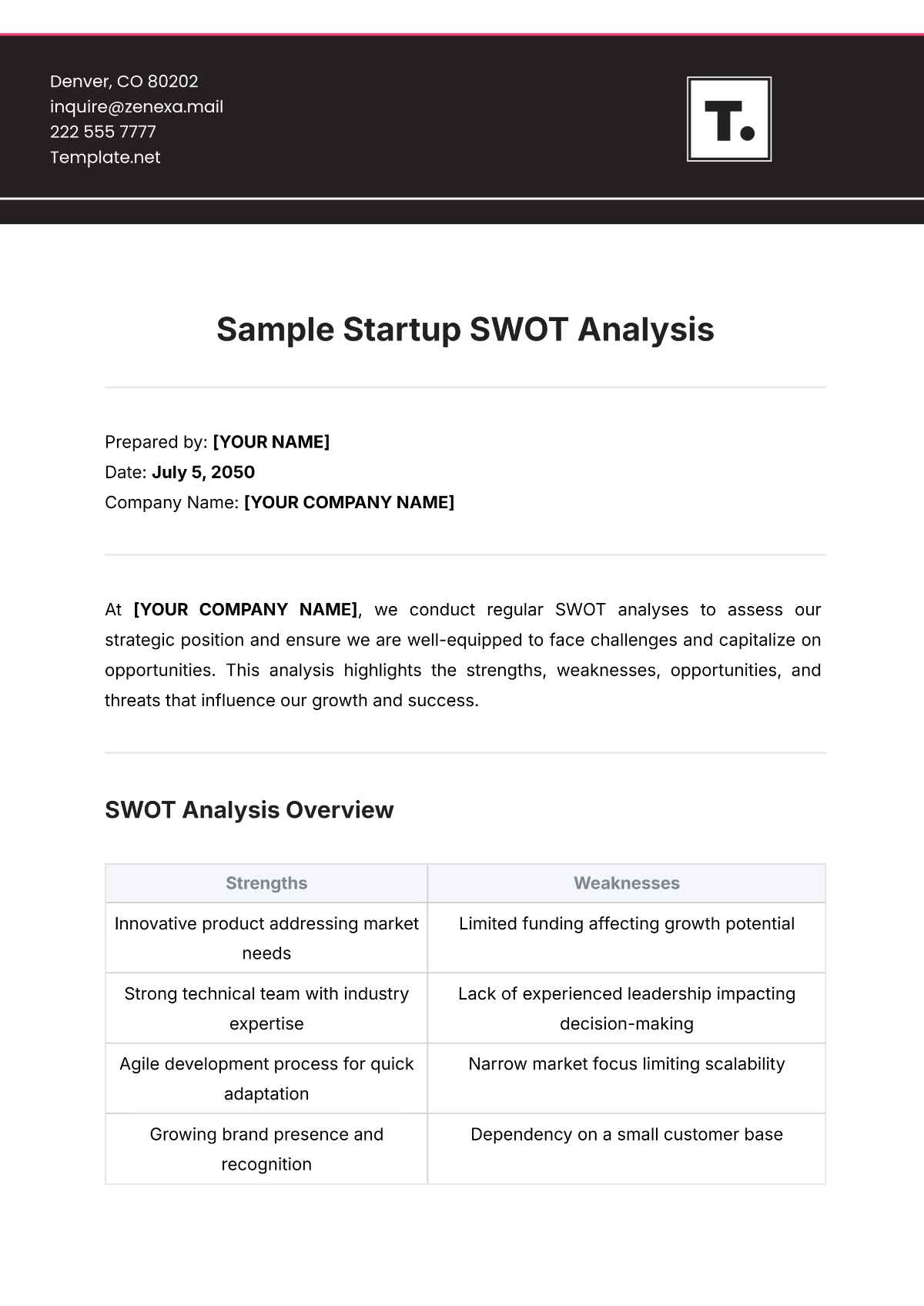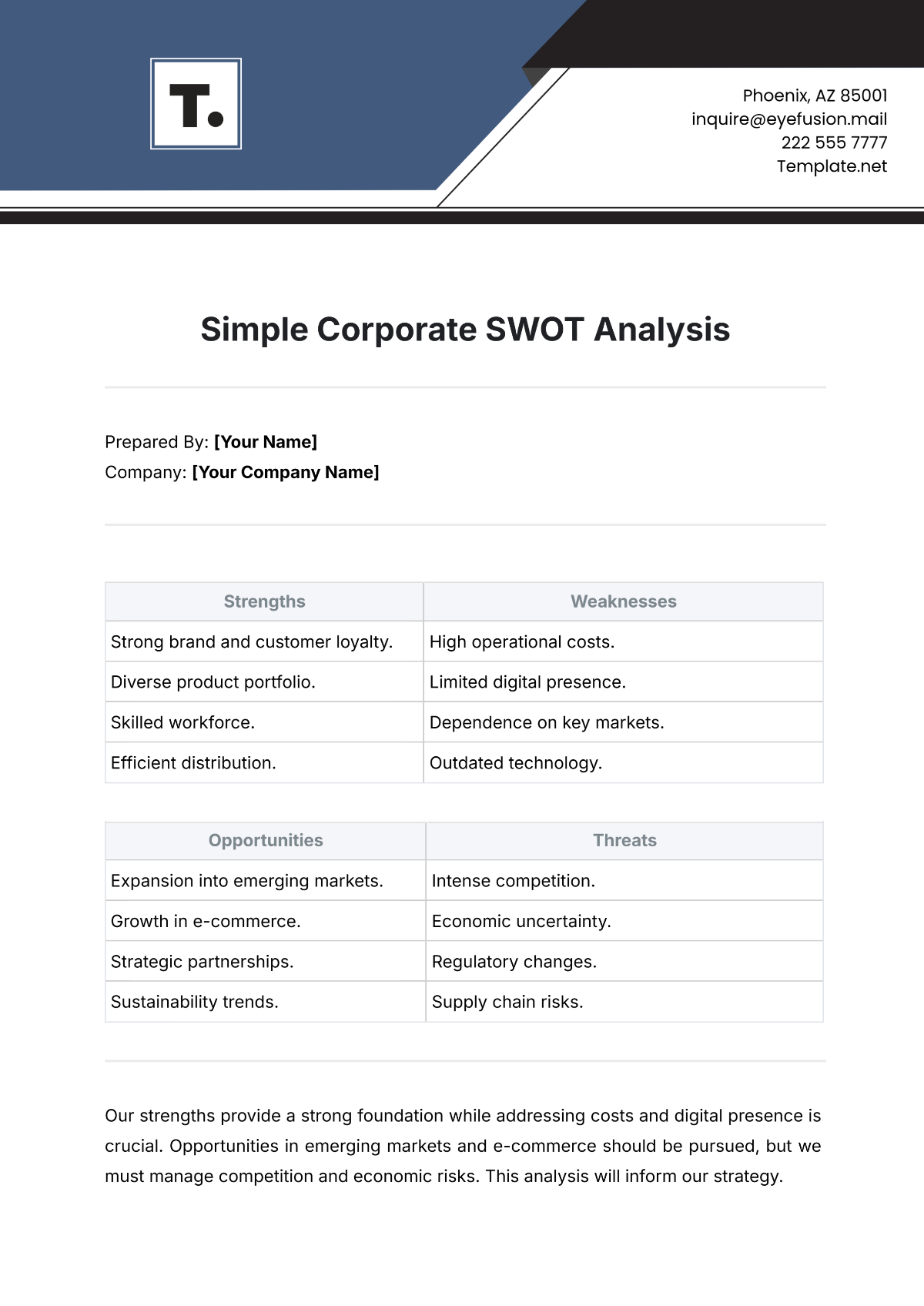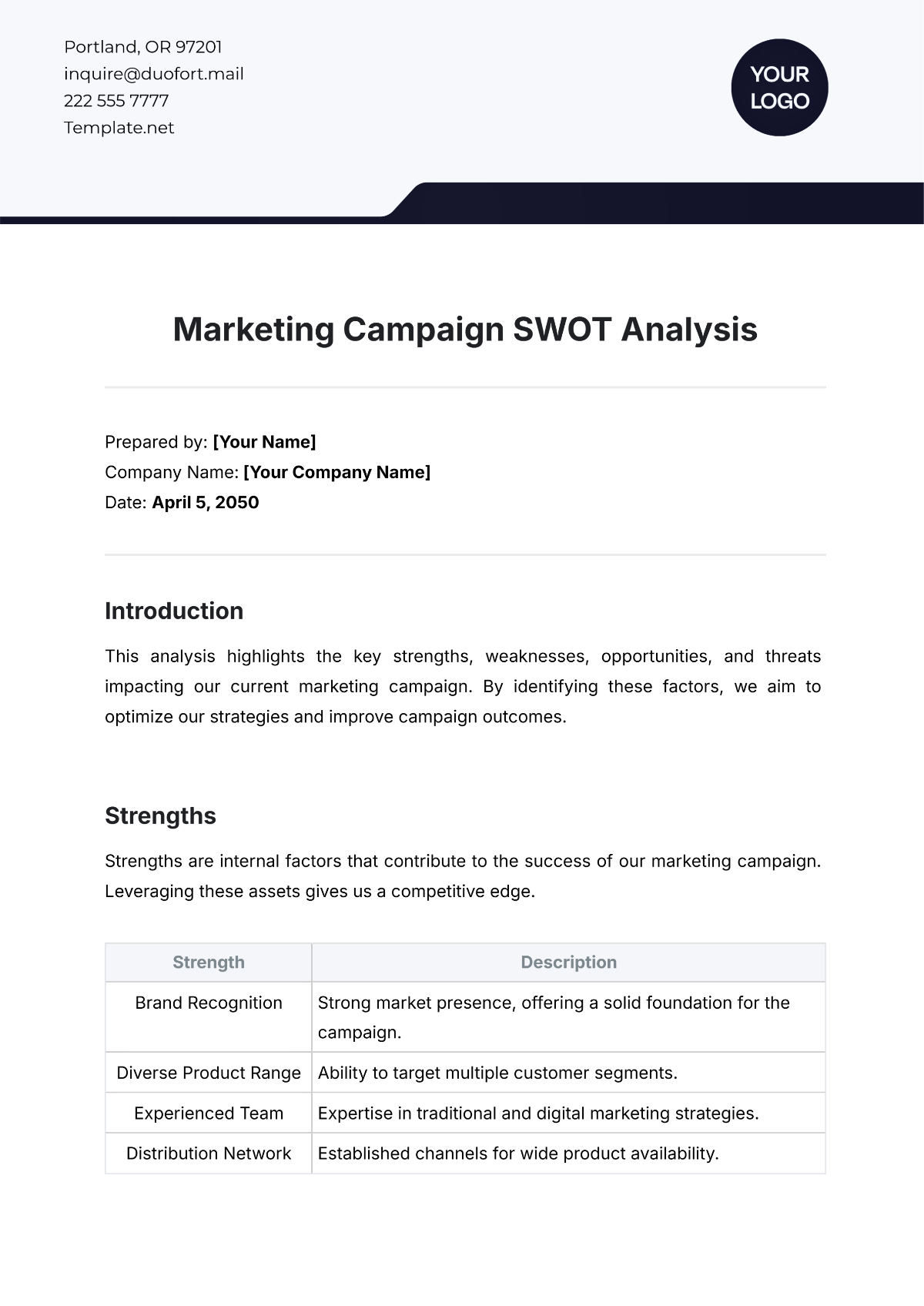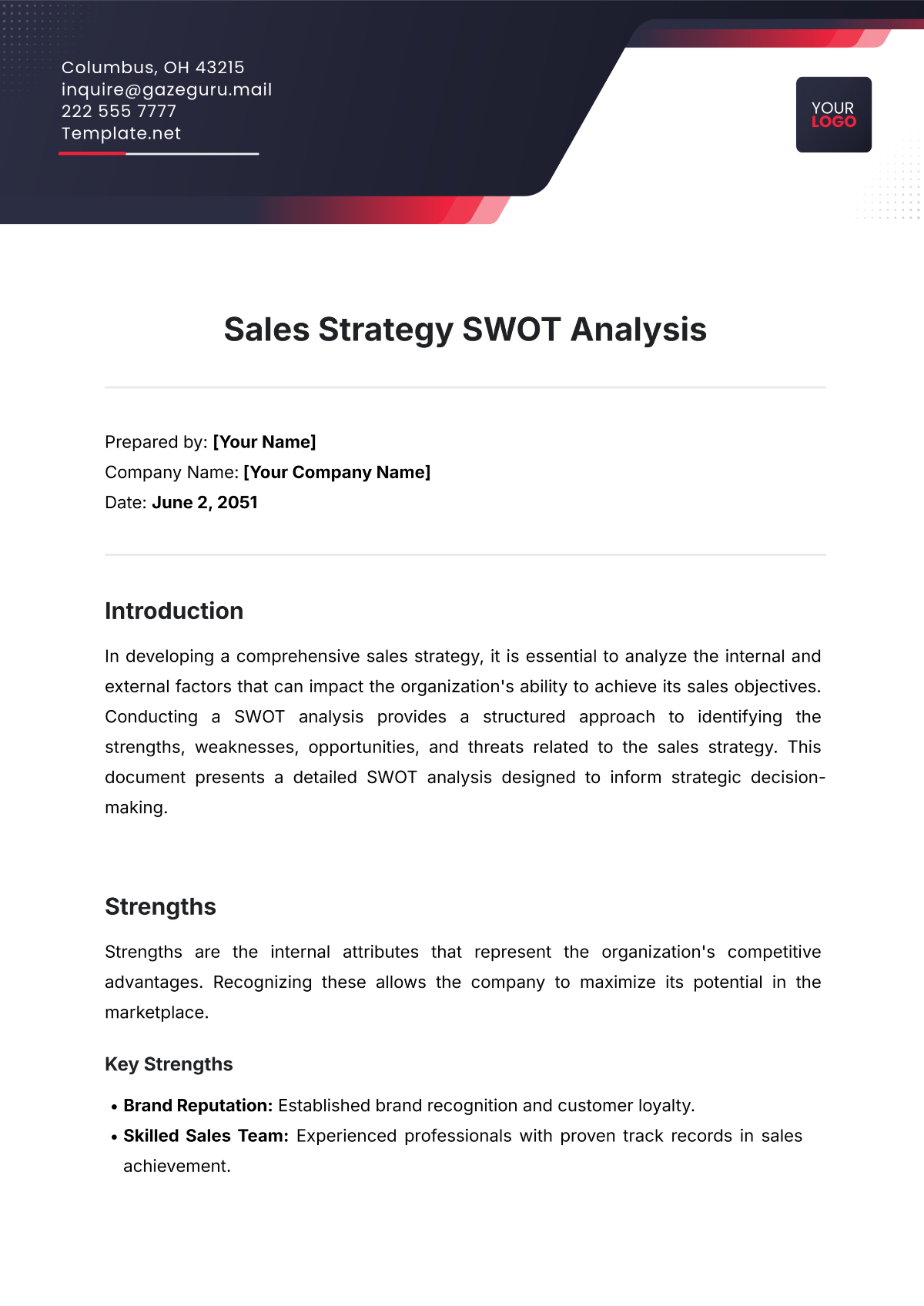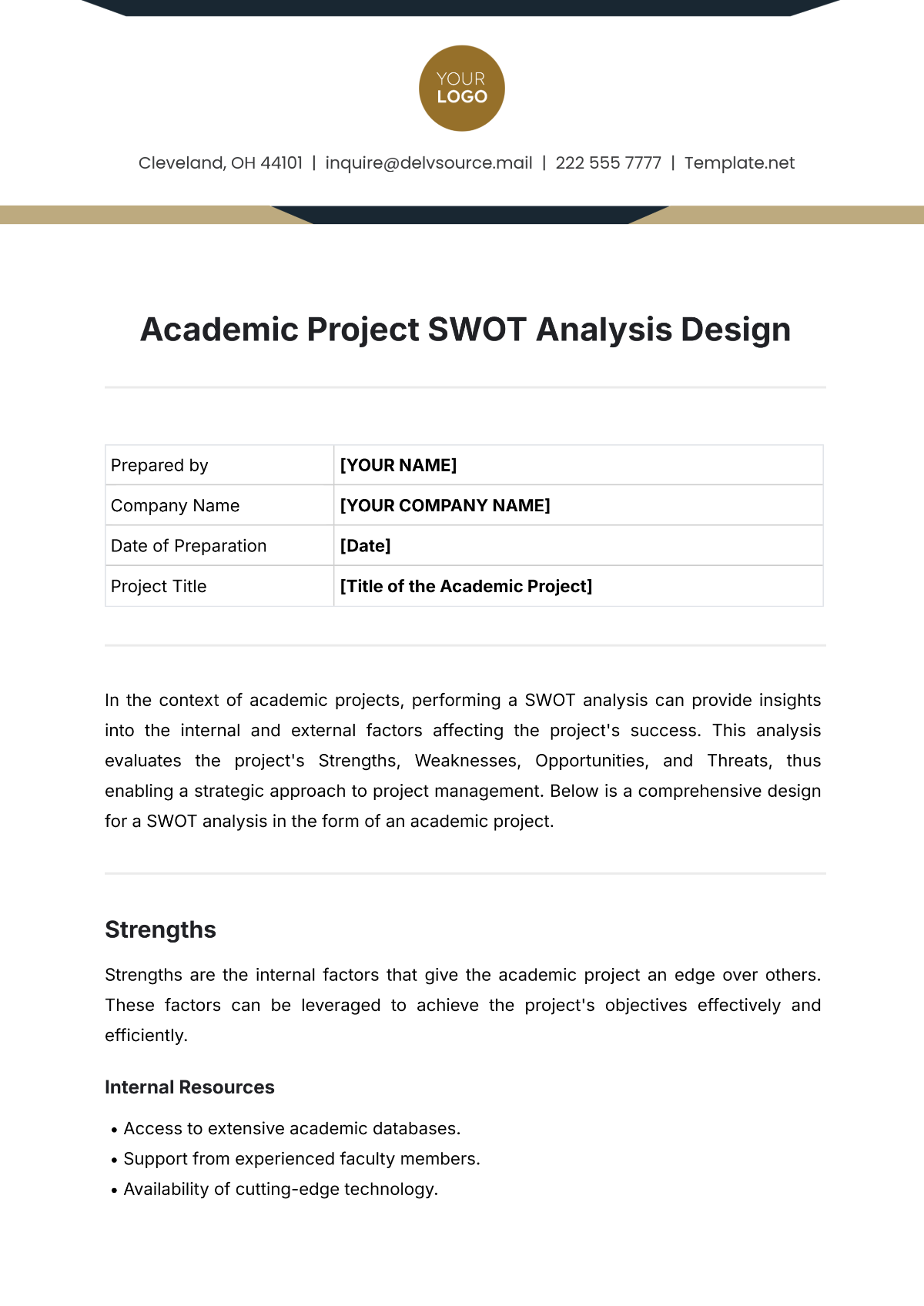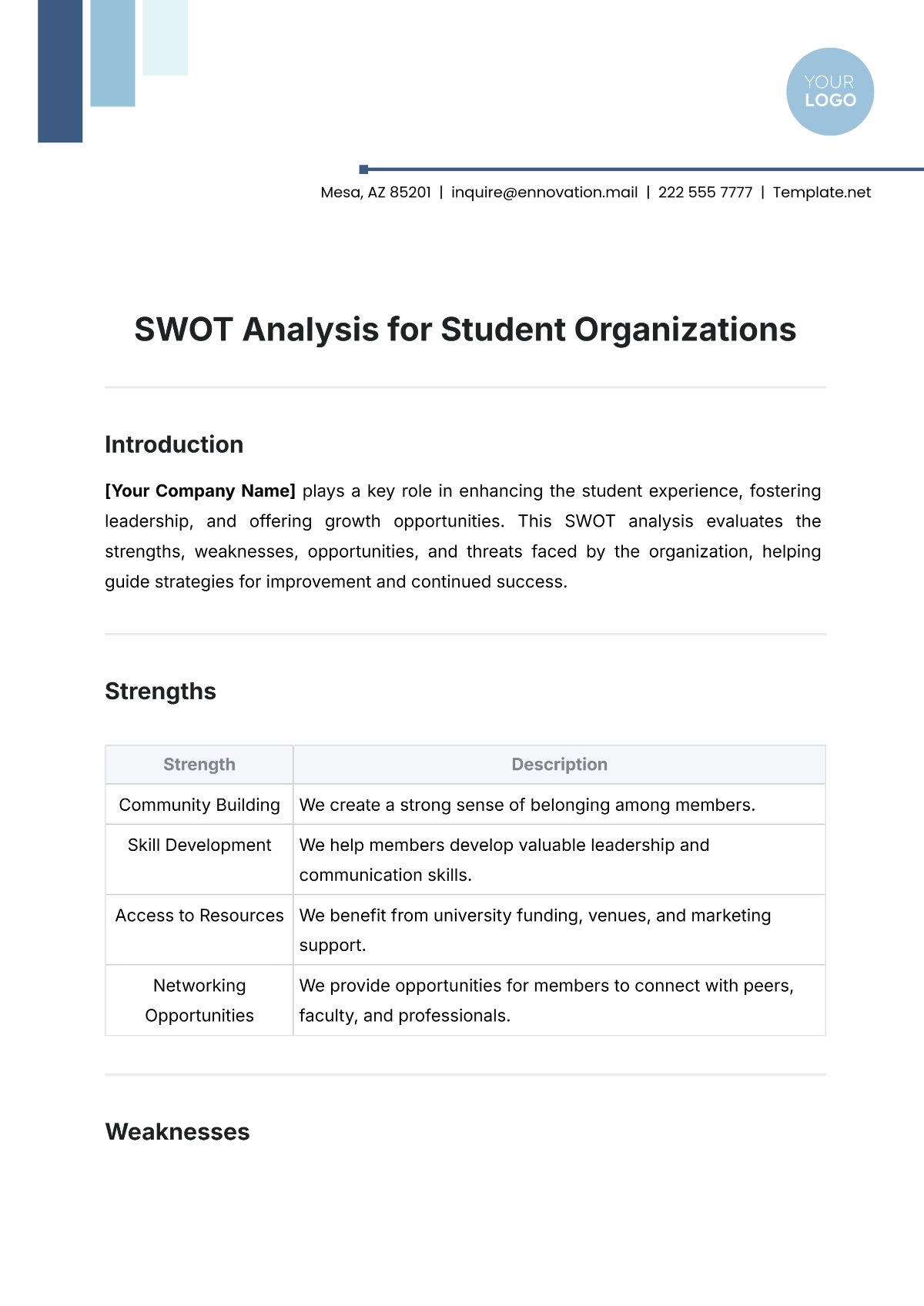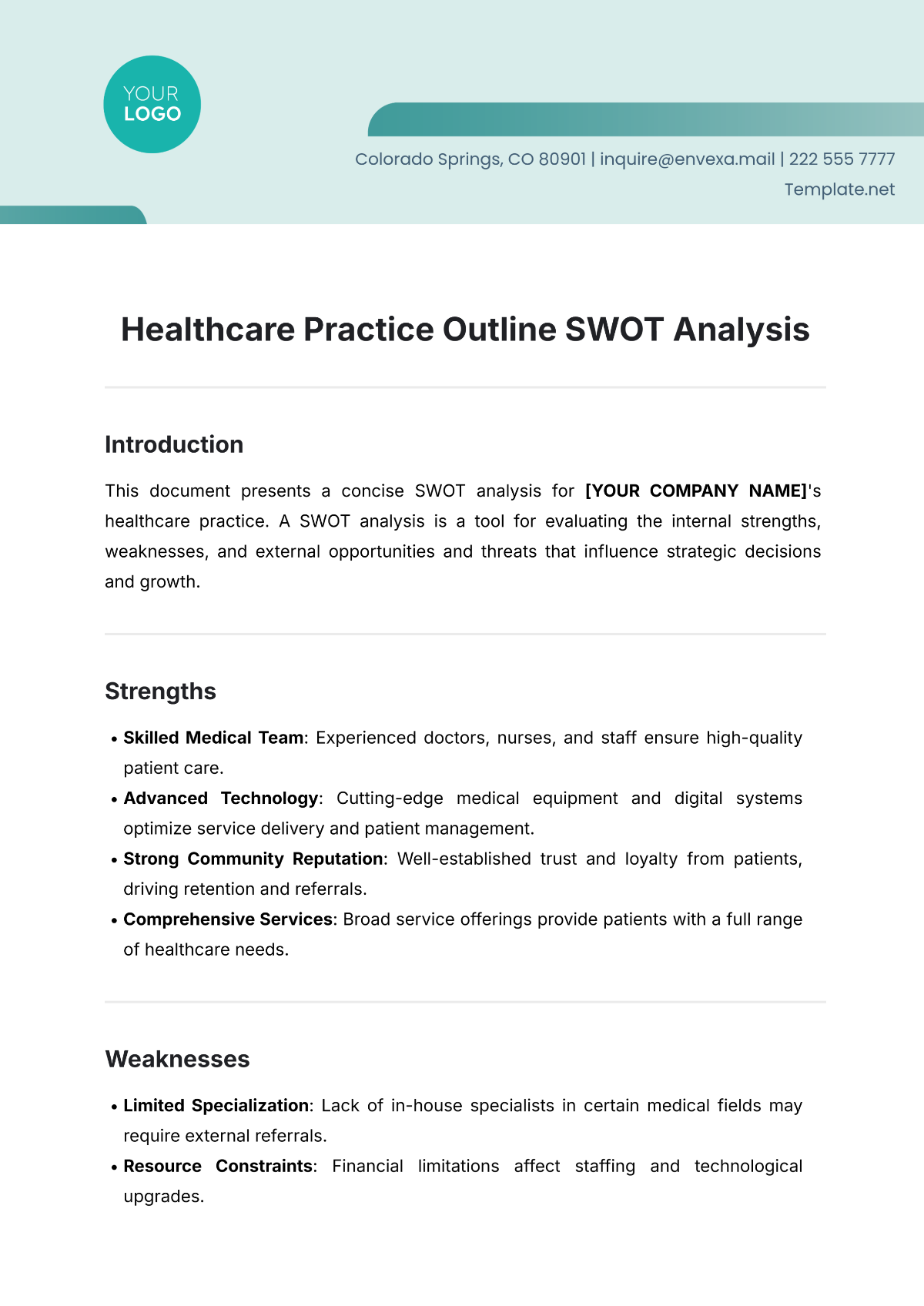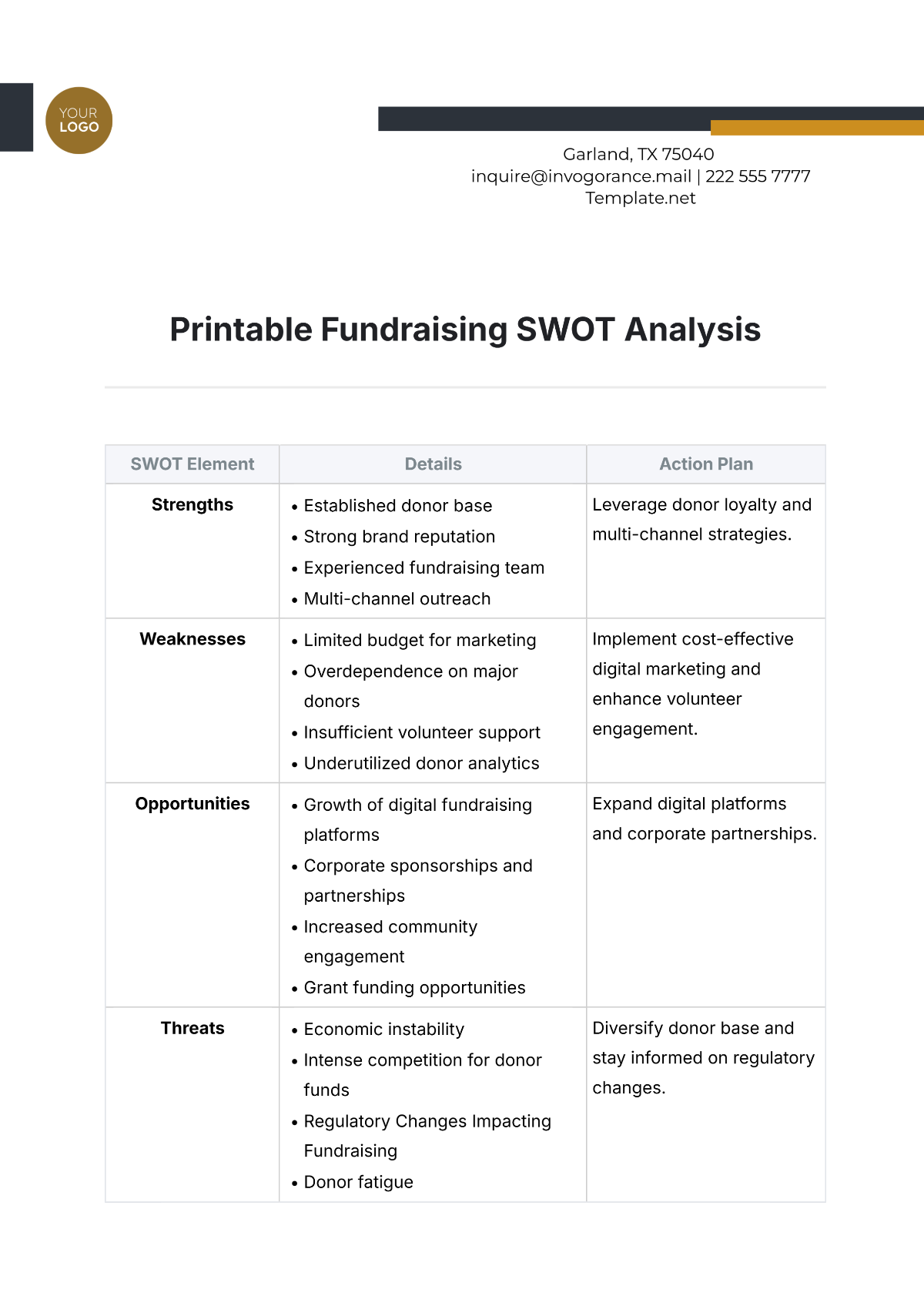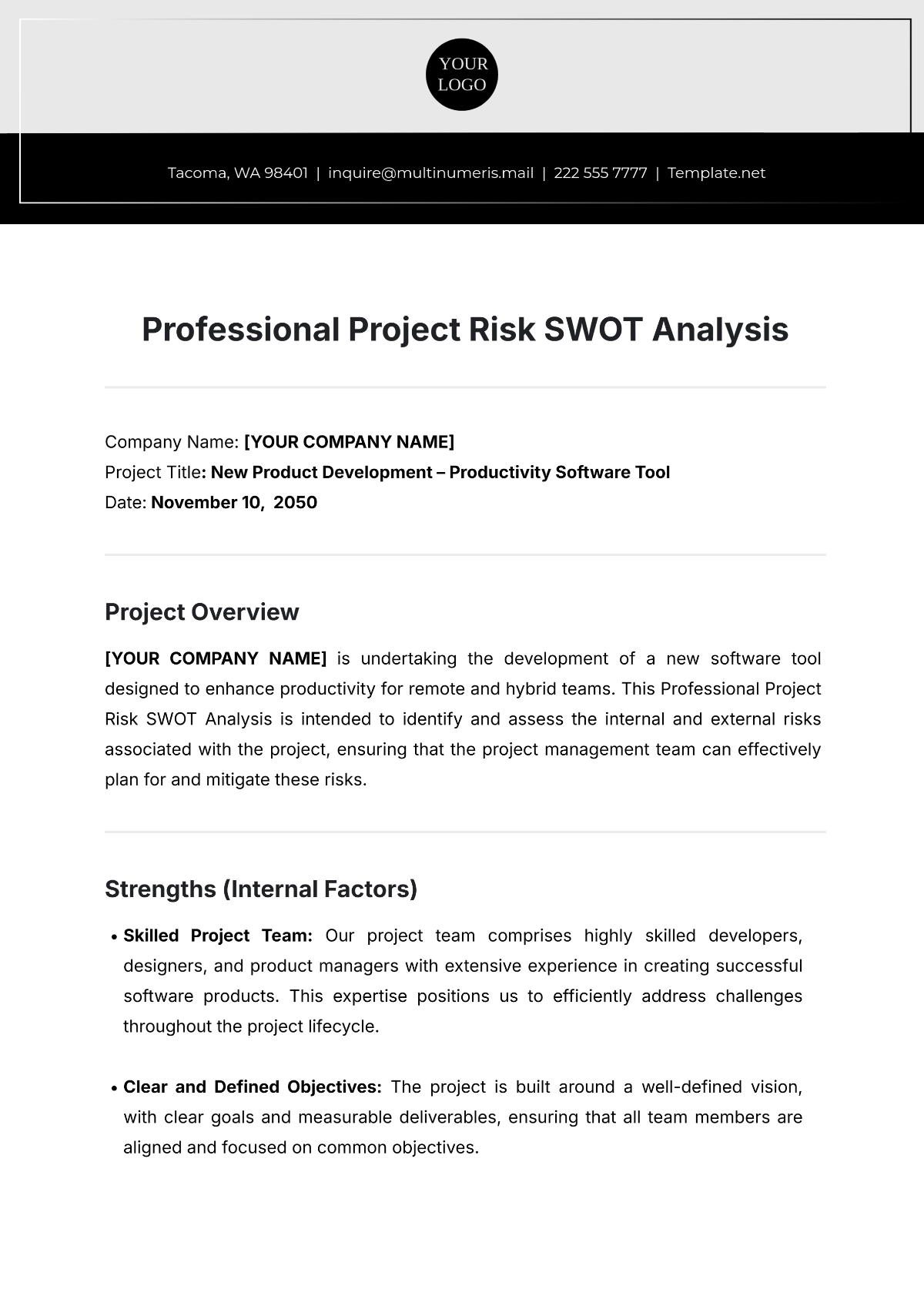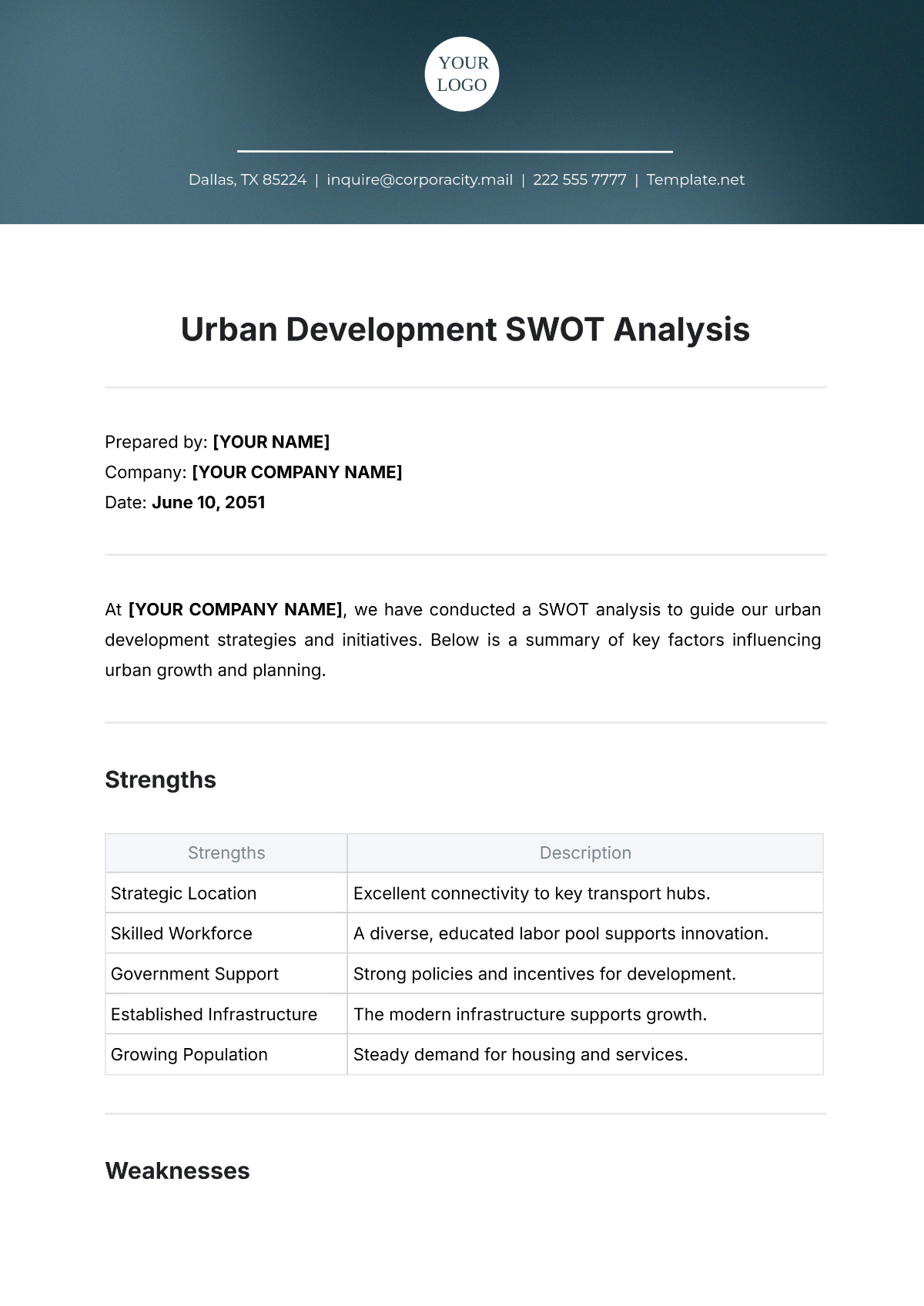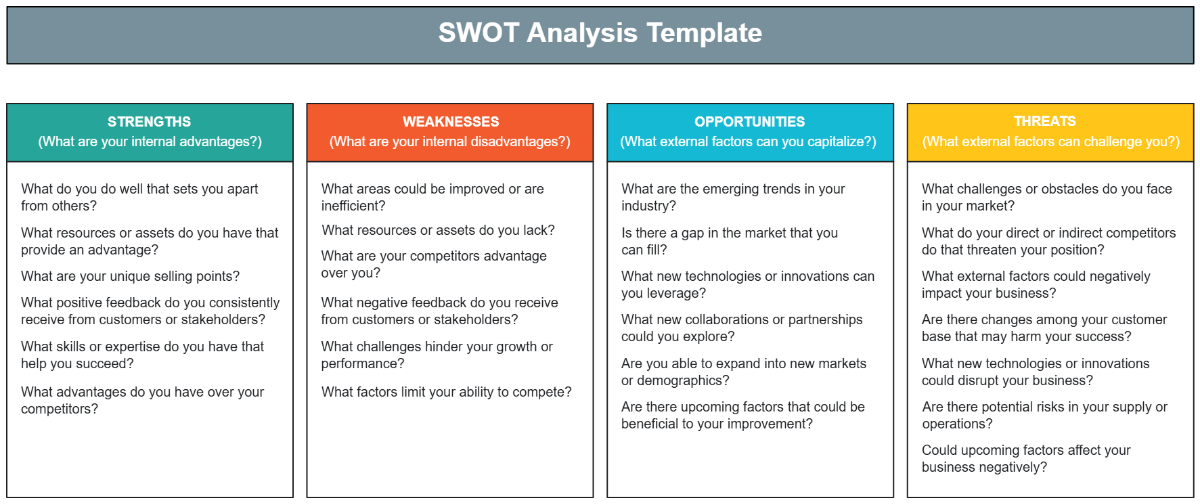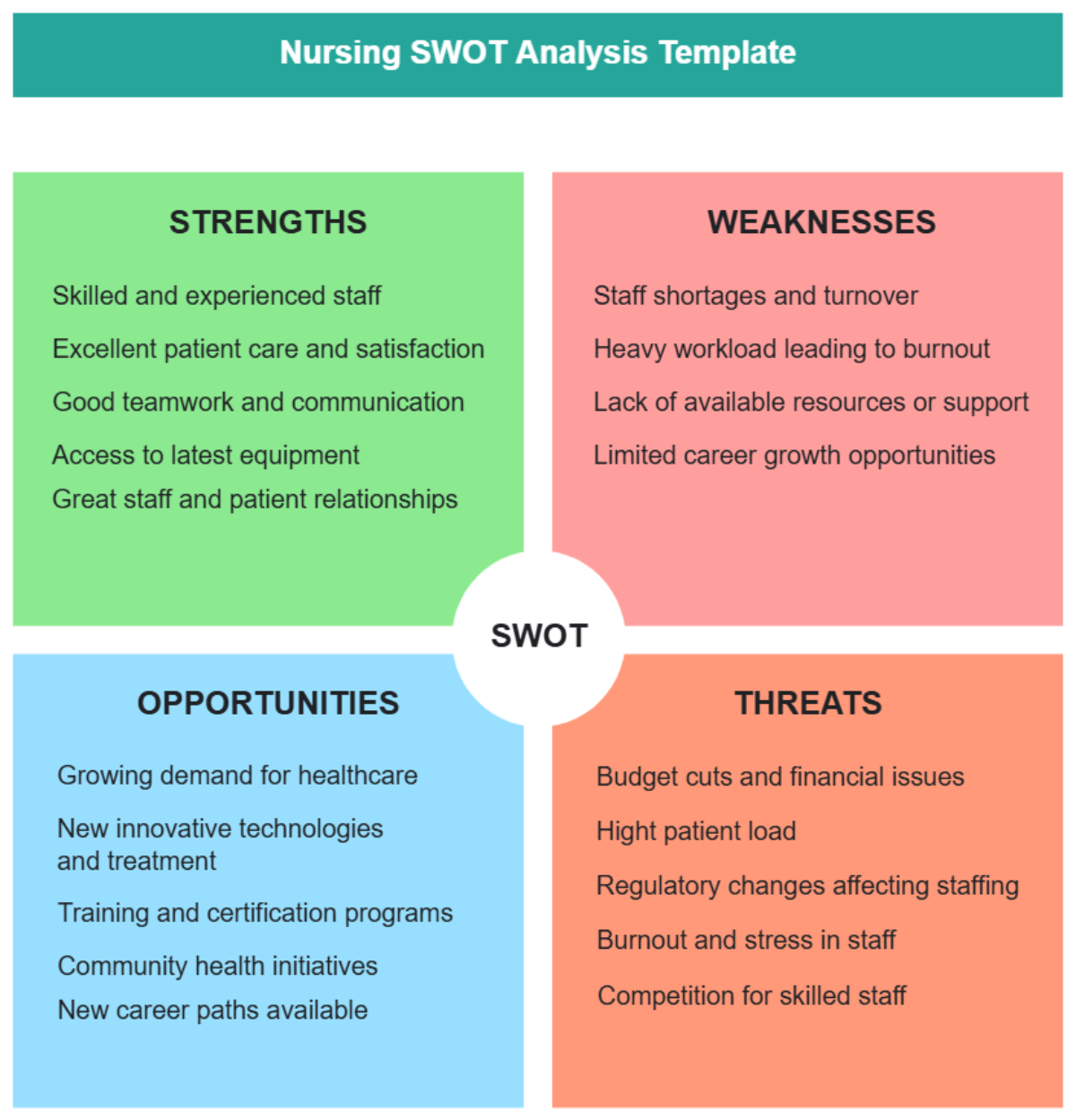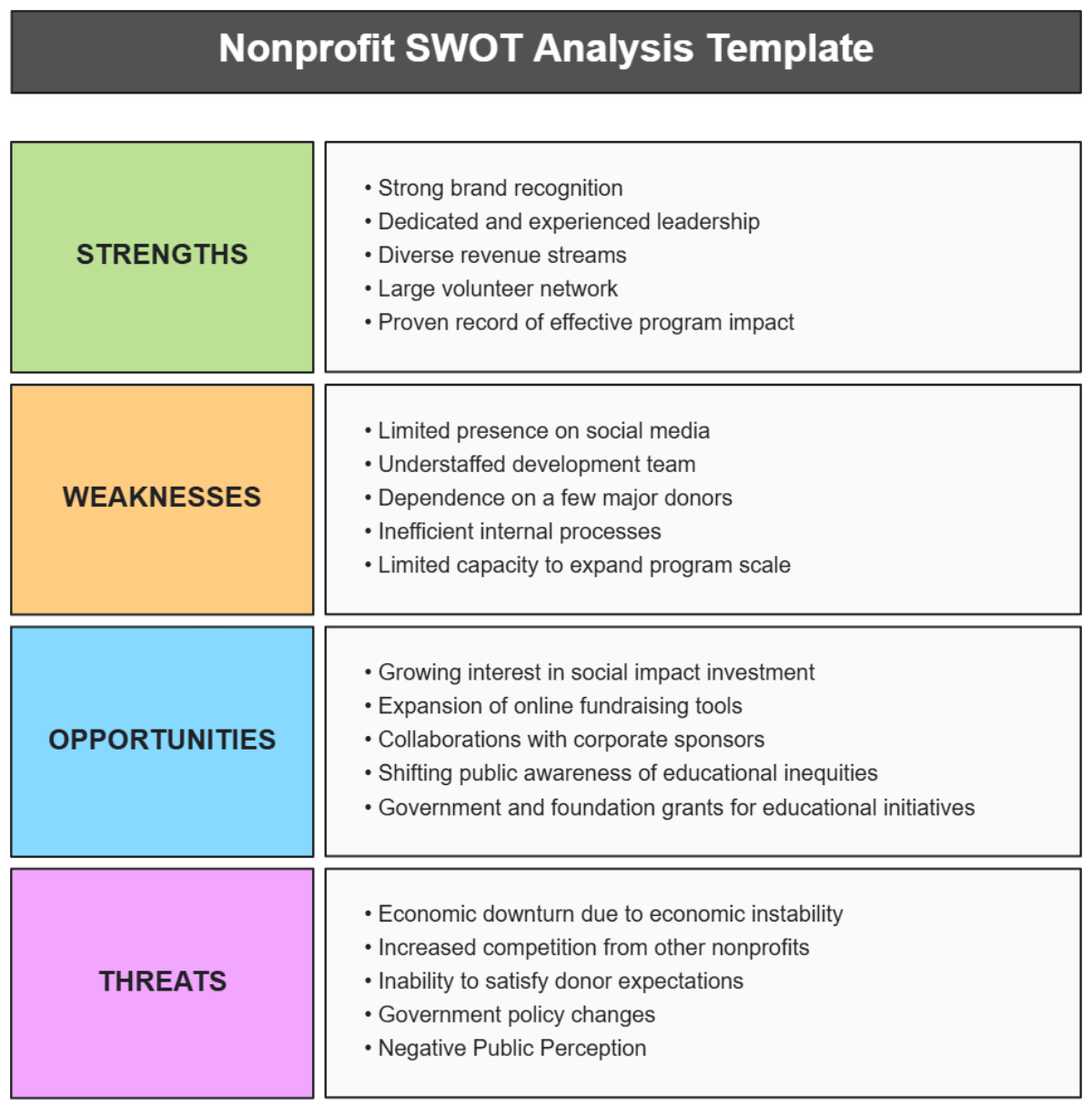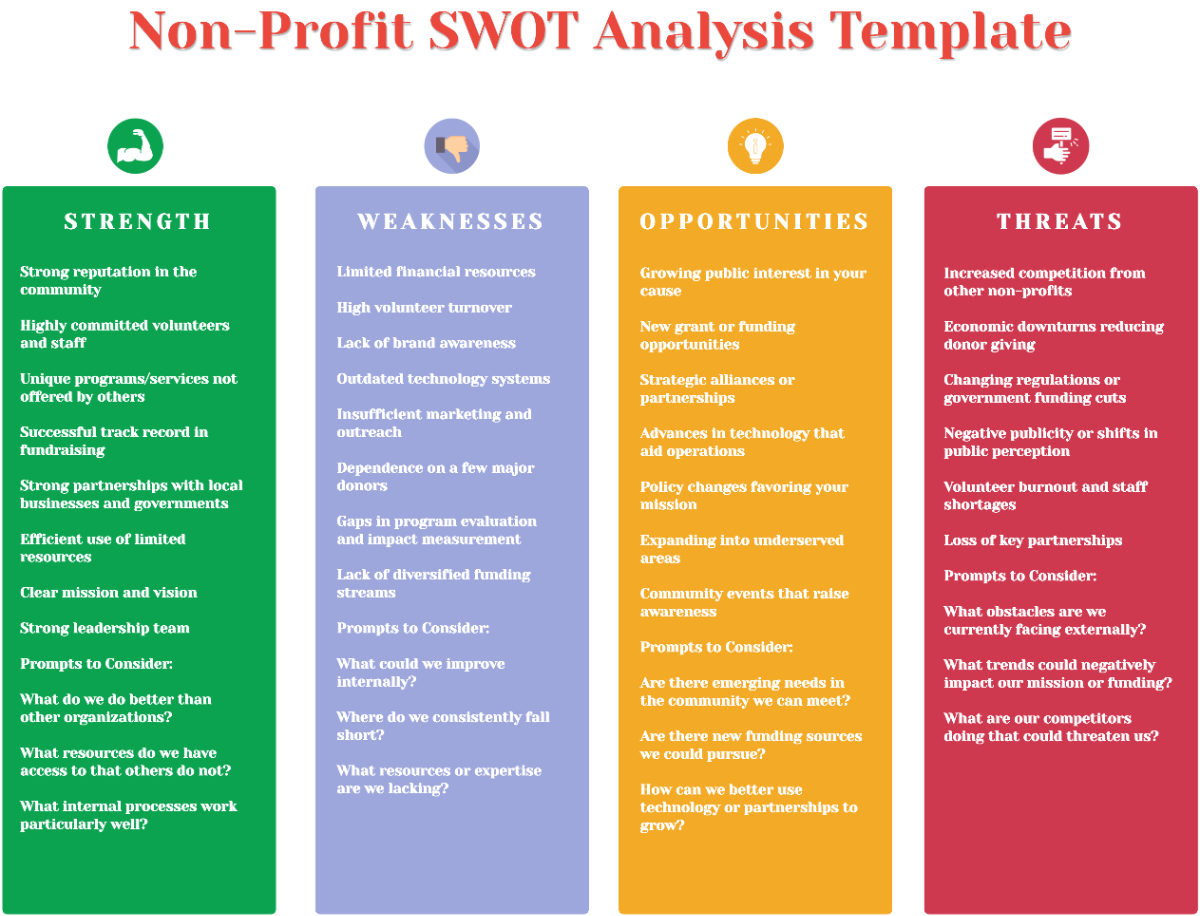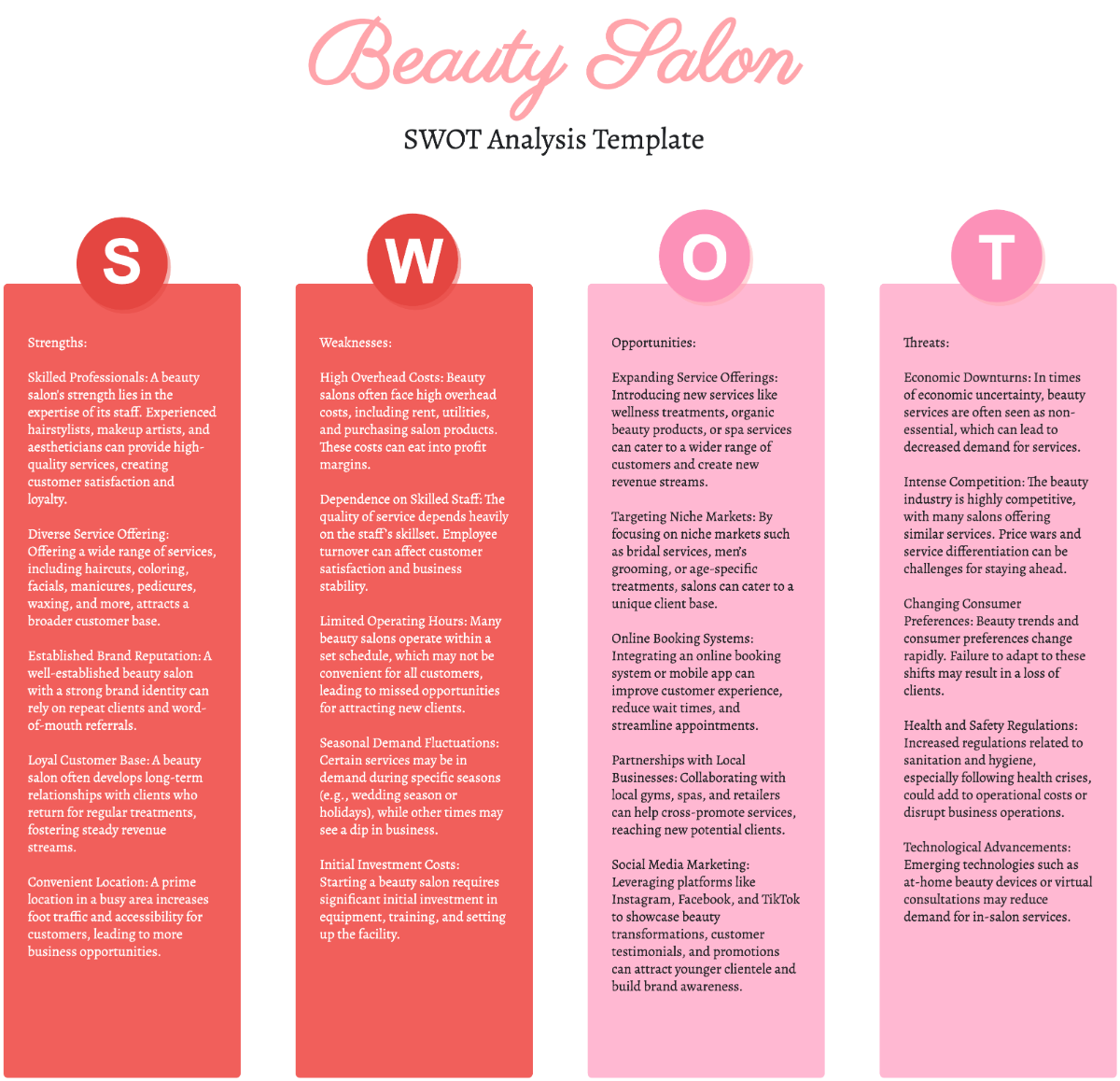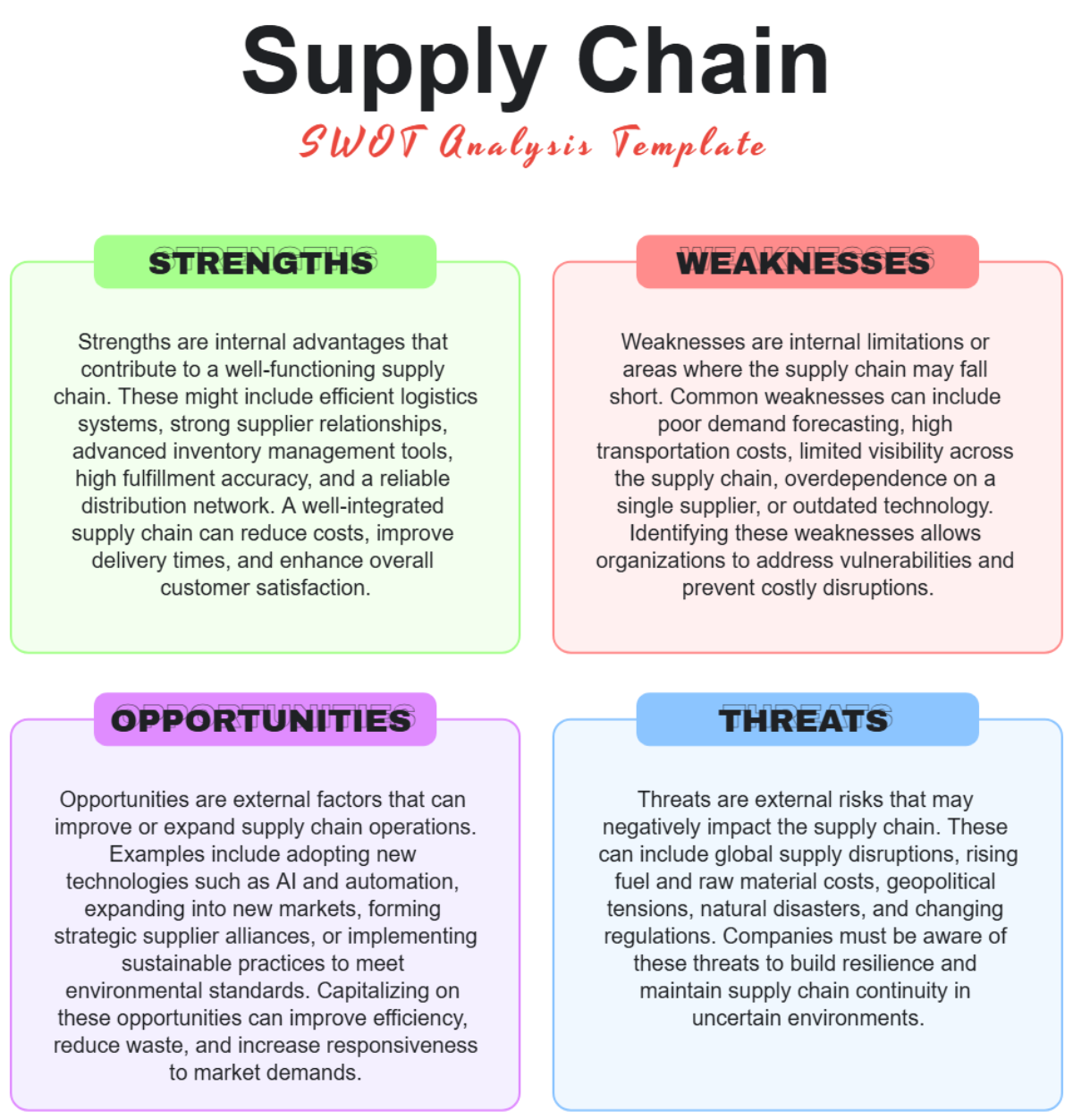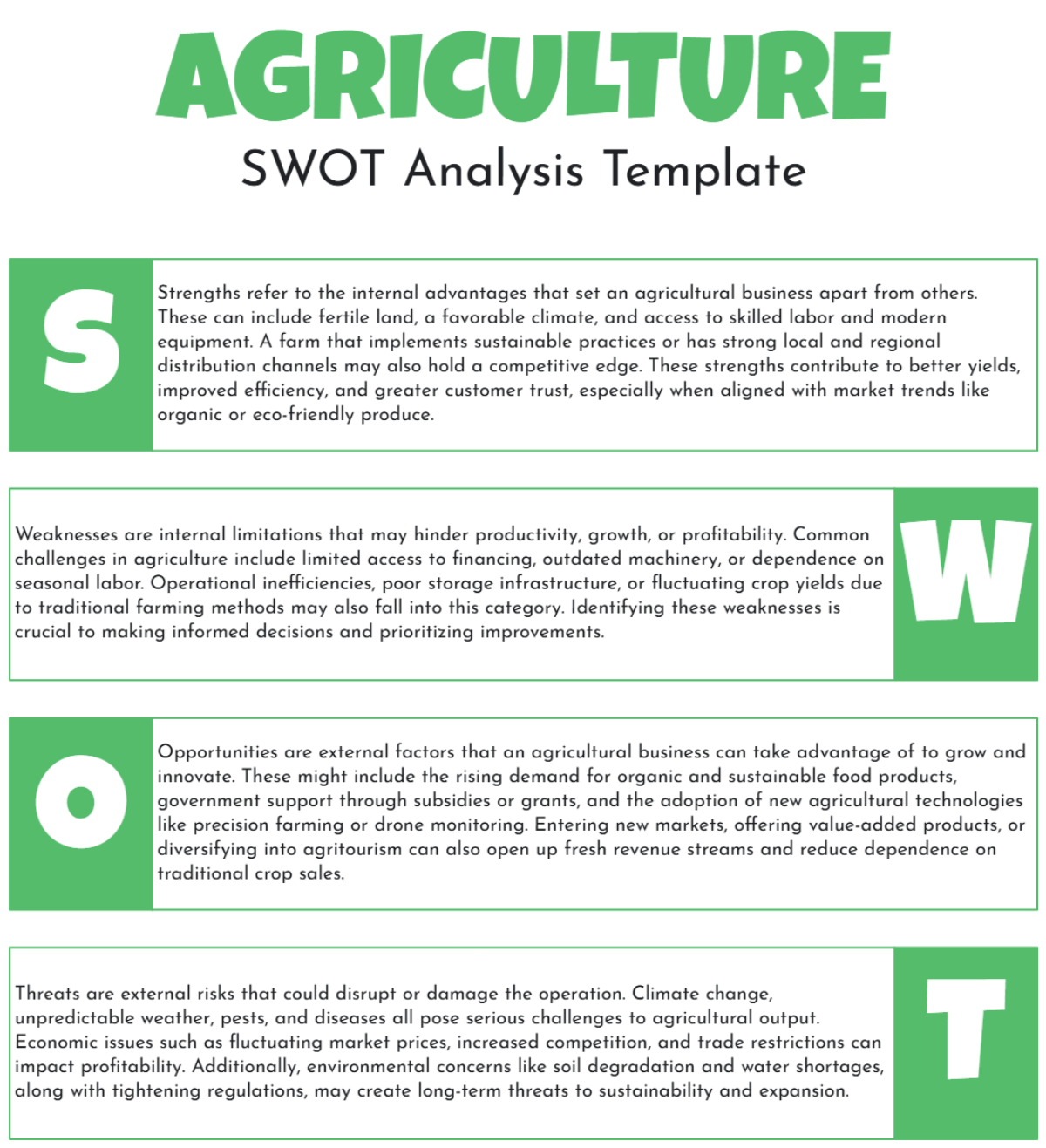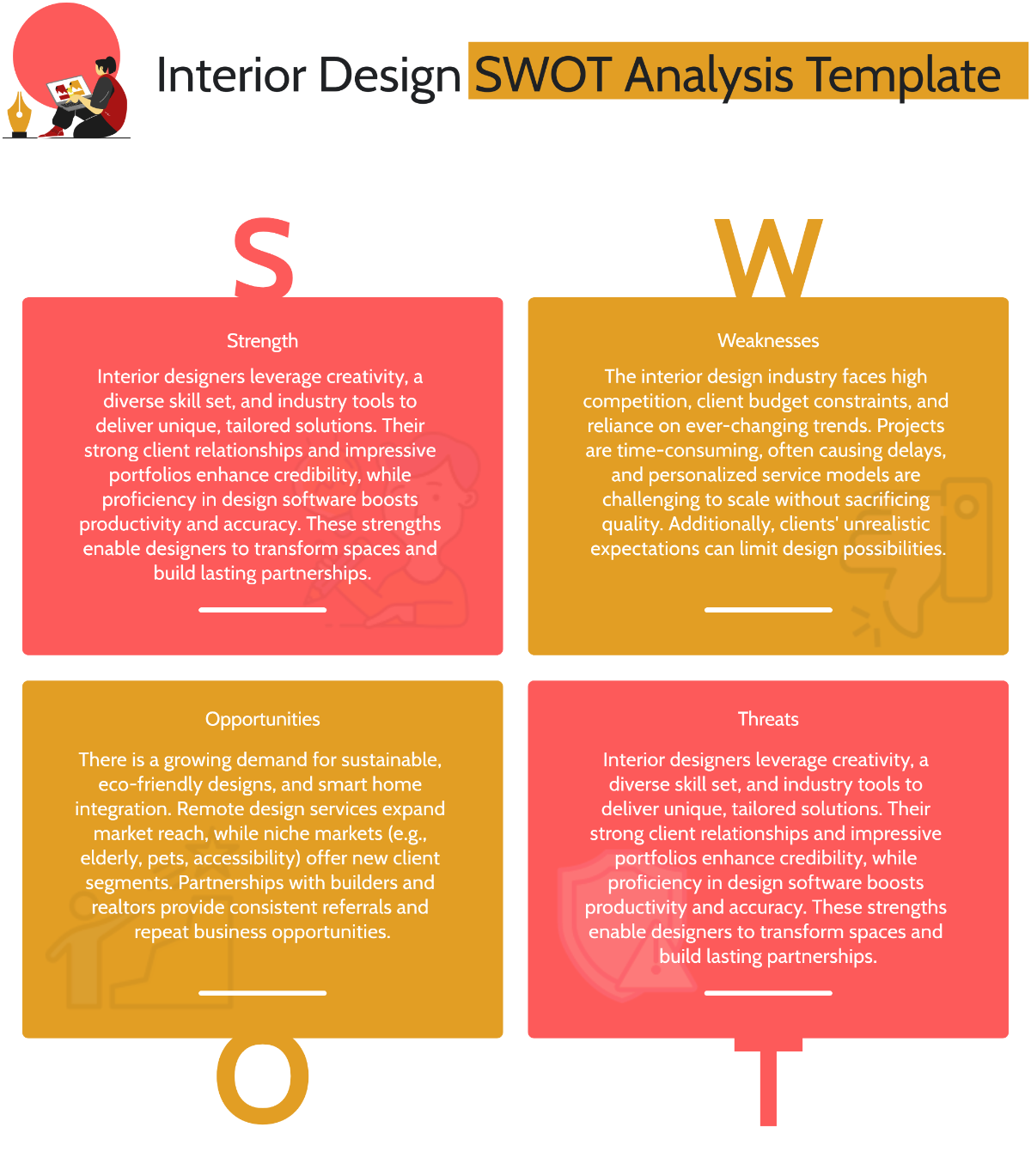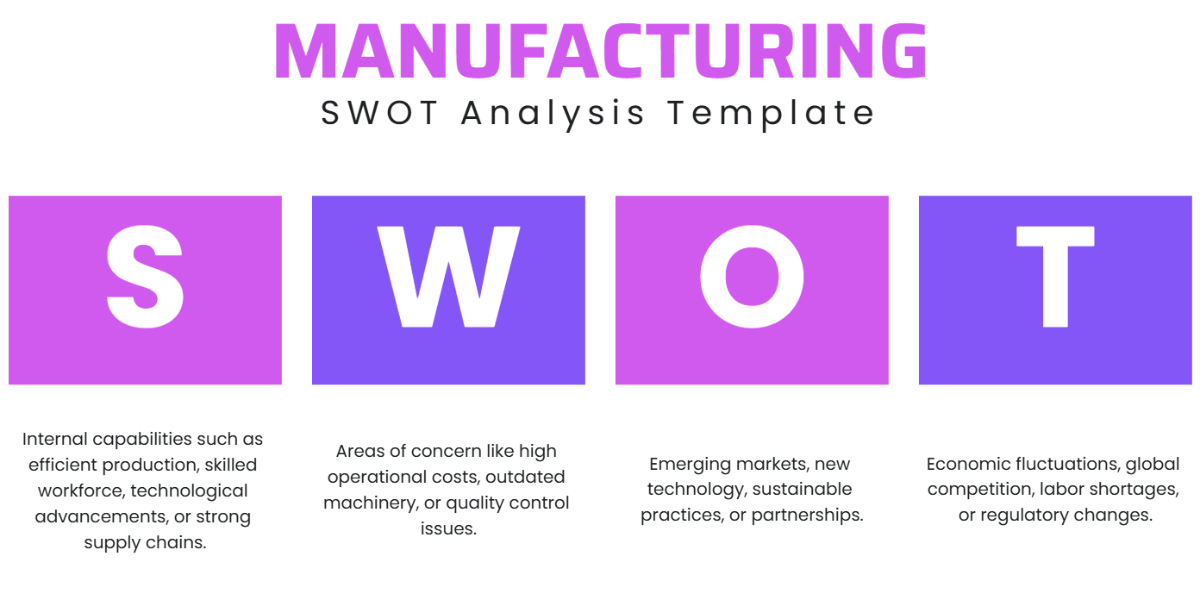MBA SWOT Analysis
I. Executive Summary
The SWOT analysis evaluates the current strategic position of [Your Company Name], a cloud-based software provider specializing in business solutions for mid-sized enterprises. The analysis identifies the company’s strengths, such as a strong product offering and loyal customer base, while also addressing its weaknesses, including slow product development cycles and high operational costs. Opportunities for expansion into international markets and growth in AI-driven automation provide significant potential, while competitive pressures and evolving data regulations pose key threats. The insights derived from this analysis will inform strategic recommendations aimed at improving operational efficiency, diversifying revenue streams, and enhancing market penetration.
II. Introduction
A. Background Information
[Your Company Name] was founded in [Year], initially providing basic cloud solutions to small businesses. Over the years, the company expanded its offerings to include a comprehensive suite of business management tools, such as customer relationship management (CRM), enterprise resource planning (ERP), and AI-powered analytics. The company serves over 500 clients primarily in North America, with an annual revenue of $[00] million. Industry growth, driven by digital transformation and cloud adoption, positions [Your Company Name] favorably for future expansion.
B. Scope of the SWOT Analysis
This analysis covers both internal factors (strengths and weaknesses) and external factors (opportunities and threats). Internally, the analysis will focus on product development, resource allocation, and market competitiveness. Externally, market trends, regulatory challenges, and competitive dynamics will be evaluated. This comprehensive scope ensures a thorough assessment of both immediate and long-term strategic needs.
III. Strengths (Internal Analysis)
A. Core Competencies
[Your Company Name] excels in delivering customizable, cloud-based software solutions that adapt to the specific needs of mid-sized enterprises. Unlike competitors offering standardized products, [Your Company Name] allows clients to tailor their tools, offering flexibility and scalability. The company has also positioned itself as a pioneer in AI-driven analytics, allowing customers to automate processes and gain deep insights into their business operations, which has become a key differentiator.
B. Brand Equity and Reputation
With a high customer retention rate of [00]%, [Your Company Name] enjoys significant customer loyalty due to its excellent customer support and product reliability. Clients often cite the company’s responsiveness and ability to solve complex software issues as major reasons for sticking with [Your Company Name]. In addition, the company has received industry accolades for its innovations, further boosting its brand reputation.
C. Skilled Workforce and Leadership
The leadership team at [Your Company Name] consists of veterans from top-tier tech firms, bringing deep expertise in cloud computing and software development. Their strategic vision has led to consistent year-over-year revenue growth of [00]%. Additionally, the company attracts top-tier engineering talent, with over [00]% of its workforce holding advanced degrees in software engineering or related fields. This pool of skilled professionals enables continuous product innovation and quality improvement.
IV. Weaknesses (Internal Analysis)
A. Operational Inefficiencies
[Your Company Name] struggles with inefficiencies in its product development cycle. While the company is known for innovation, its development process takes longer than the industry average. On average, it takes 18 months for new product features to be rolled out, which is considerably slower than key competitors who typically update their products every 12 months. Additionally, the company’s customer support team, though highly rated, is understaffed, leading to delayed issue resolution.
Metric | Industry Standard | [Your Company Name]'s Performance |
|---|---|---|
Product Development Cycle | 12 months | 18 months |
Customer Support Staff | 150 employees | 90 employees |
B. Resource Limitations
[Your Company Name] is heavily reliant on North American markets, with [00]% of its revenue coming from this region. The lack of international presence limits the company’s ability to mitigate risks associated with market saturation. Additionally, [00]% of the company’s revenue comes from just five key clients. This reliance increases vulnerability should one or more of these clients reduce their spending or switch to a competitor.
V. Opportunities (External Analysis)
A. Market Growth and Expansion
There is considerable potential for [Your Company Name] to expand into international markets, particularly in Europe and Asia, where the adoption of cloud solutions is increasing among mid-sized enterprises. These markets present untapped potential, with projected cloud service growth rates of [00]% annually in these regions. Additionally, the company could leverage its expertise in AI to develop new product lines tailored to specific industries like healthcare, finance, and manufacturing, all of which are seeing increased demand for automation and AI-driven insights.
B. Industry Trends and Innovations
[Your Company Name] can capitalize on the growing trend of automation across industries. With businesses increasingly seeking to optimize operations, the demand for AI-powered solutions continues to rise. This trend aligns with the company’s core competencies, positioning it well to introduce more advanced automation features in its software, including machine learning algorithms and predictive analytics. Furthermore, as more companies transition to cloud-based infrastructure, [Your Company Name] can strengthen its market position by enhancing its existing cloud integration services.
C. Strategic Partnerships
Strategic partnerships with cloud infrastructure giants like Amazon Web Services (AWS) and Microsoft Azure could provide the scalability needed to support international expansion and enhance service reliability. Additionally, potential mergers or acquisitions of smaller, niche tech firms could help [Your Company Name] diversify its offerings and enter new market segments, such as cybersecurity or IoT (Internet of Things) solutions, thereby expanding its customer base.
VI. Threats (External Analysis)
A. Competitive Pressure
The cloud-based software market is becoming increasingly competitive, with large players such as [Competitor A], [Competitor B], and [Competitor C] entering the space. These companies have greater resources, allowing them to invest heavily in research, development, and aggressive marketing. Price competition is also intensifying, with some rivals offering lower-cost solutions to attract mid-sized businesses, which puts pressure on [Your Company Name] to maintain competitive pricing without compromising quality.
Competitor | Revenue ([Year]) | Competitive Strength |
|---|---|---|
[Competitor A] | $[00] | Economies of scale, Brand Strength |
[Competitor B] | $[00] | CRM expertise, Broad Market Reach |
[Competitor C] | $[00] | Strong Database Solutions |
B. Economic and Market Conditions
Global economic uncertainty, including inflation and potential recessions, poses a threat to [Your Company Name]’s growth. Clients may scale back their IT budgets during periods of economic downturn, affecting demand for new features or services. Additionally, rising inflation could lead to increased operational costs, particularly in R&D and labor, further straining profit margins.
C. Regulatory Risks
Evolving data privacy regulations, such as the General Data Protection Regulation (GDPR) in Europe and the California Consumer Privacy Act (CCPA) in the U.S., require companies like [Your Company Name] to make continuous adjustments to ensure compliance. These regulations could increase operational costs and may result in significant penalties if not properly managed. The rise in cybersecurity threats also presents risks, as any major data breach could damage the company’s reputation and lead to loss of client trust.
VII. Strategic Recommendations
A. Leveraging Strengths
[Your Company Name] should capitalize on its AI capabilities by investing further in machine learning and predictive analytics to stay ahead of competitors. Additionally, the company should continue to nurture its strong client relationships by introducing new customer loyalty programs and enhancing its already excellent customer support.
B. Addressing Weaknesses
To address operational inefficiencies, the company should invest in automating parts of its product development cycle to reduce time-to-market. It should also consider hiring additional customer support staff to ensure timely issue resolution. Moreover, [Your Company Name] should begin diversifying its client base to reduce reliance on a few key clients by targeting smaller, high-growth companies in new industries.
C. Capitalizing on Opportunities
[Your Company Name] should prioritize international expansion by forming partnerships with local firms in Europe and Asia. This would allow the company to tap into fast-growing markets while minimizing entry risks. Additionally, the company should explore creating industry-specific solutions, particularly in healthcare and finance, where demand for AI and cloud solutions is rising.
D. Mitigating Threats
To counteract increasing competition, [Your Company Name] should focus on differentiating its product offerings by emphasizing customization and AI-driven automation. The company should also enhance its cybersecurity measures and maintain strict compliance with data privacy regulations to mitigate regulatory risks.
VIII. Conclusion
[Your Company Name] is well-positioned to continue its growth trajectory by leveraging its strengths in AI-driven solutions and customer loyalty. However, addressing internal inefficiencies and expanding internationally are critical to maintaining competitive advantage. With the right strategic investments in innovation, international markets, and operational efficiency, [Your Company Name] can sustain growth while mitigating emerging threats in a highly competitive landscape.

